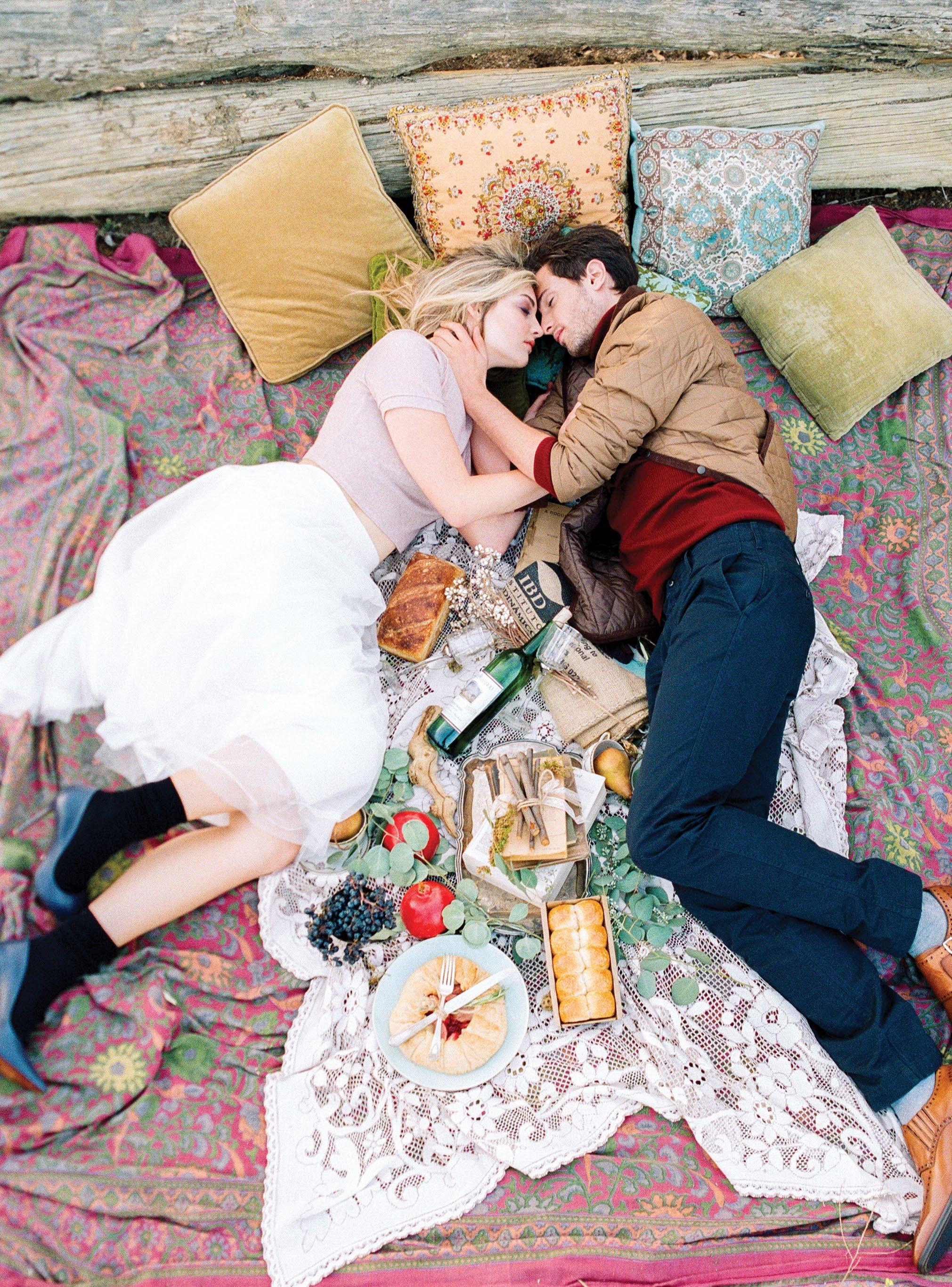

content magazine, san jose dine 6.5 $9.95 siliconvalley’S &INNOVATIVE CREATIVE CULTURE madeinsanjose,ca CONTENT Issue 6.5 dine display until Feb. 15, 2015 Featuring: Chef David Kinch_manresa Restaurant Allen Johnson_Needle to the Groove Tanja Lippert_Fashion Shoot Chuy Gomez_Radio DJ Mary Souza_Artist The Cats Restaurant and Tavern

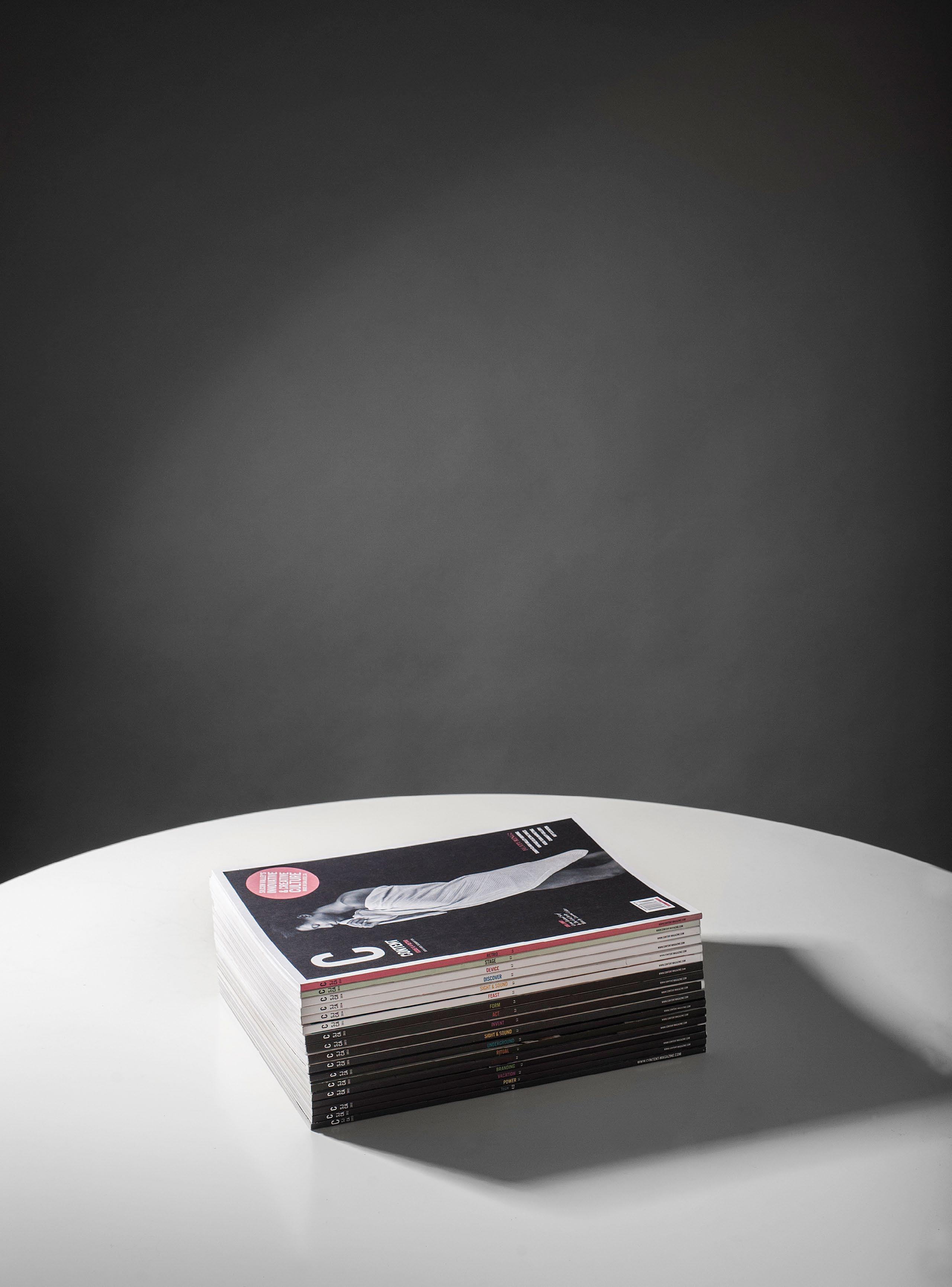
#WeLovePrint 3 Subscribe www.content-magazine.com Celebrating three years of print
CCONTENT
Issue 6.5
“Dine”
Dec 2014 /Jan 2015
The Makers:
Cultivator
Daniel Garcia
Managing Editor
Flora Moreno de Thompson
Managing Photo Editor
Gregory Cortez
Designers
Brian Gomez, Brian Jensen
Sean Lopez, Kevin Zittle
Circulation/Distribution
Leo Bevilacqua
Marketeer
Sarah Garcia
Senior Editor
Odile Sullivan-Tarazi
Production/Social Media
Victoria Felicity, Kristen Pfund
Photographers
Lam Nguyen, Victoria Felicity
Gregory Cortez, Stan Olszewski
Writers
Mark Haney, Leah Ammon, Nathan Zanon
Lam Nguyen, Anna Bagirov, Isara Krieger
Victoria Felicity, Chad Hall, Kate Evans
Over three years ago, I (along with a few crazy San Joseans) believed that the South Bay needed a quality print publication. I would share all their names—their faces are appearing in my mind as I write this—but there are too many to list. Yet they know they are, and remember the meetings, late nights, discussions, planning, and my insane charge to make Content a reality.
In the midst of the “print is dead” movement, we launched, determined to discover and display the people and things that we love about Santa Clara County. When we printed the first issue of Content, a friend told me “The first one is easy, it’s each issue after that is difficult.” That was the best advice I could have received. Running this magazine has proven to be incredibly difficult. The writers, graphic artists, photographers, and subscriptions managers know this all too well. But we also know the joy of connecting people to new businesses, new artists, and new networks for personal and business relations. That has been worth every late night, and is what continues to propel us forward.
With the completion of our third year and our 18th print issue, we wanted to celebrate with our readers—not only to celebrate the past, but the future.
We are looking forward to a 2015 full of great expectations, new partnerships, and distribute channels. We will continue raising the quality and reach of our magazine.
There probably isn’t a better way to celebrate than to sit at a table, share a meal and a drink, and some music. Therefore, we give you our year-end issue: DINE!
May you and yours be content.
May you enjoy each other and life.
May we all lift a glass together and toast to the future with hope.
May we share each other’s company—and DINE.
Enjoy.
Daniel Garcia The Cultivator
IN THIS ISSUE
Chef David Kinch / Chuy Gomez / Tim Atlas / Decca Design
To participate in Content Magazine: editor@content-magazine.com
Subscription & Advertising information available by contacting sarahg@content-magazine.com
Dec 2014/Jan 2015 San Jose, California




Sister city 8 Tainan, Taiwan CULTURE 10 Museum of Agriculture 12 San Jose Documentary Film, Norman Kline ART & Design 14 Artist, Mary Souza 20 DeCarolis to Decca,Vincent DeCarolis and Shelia Hatch Profiles 24 Filco, Fil Maresca 26 Radio Host & DJ, Chuy Gomez 28 Needle to the Groove, Allen Johnson 32 Behind the Food Carts, Kim Pham and Phil Shen dine 36 Big Dog Vineyards, Mark and Sandy Capalongan 38 Schurra’s Fine Confections, Brian and Michelle Mundy 40 The Cats Restaurant and Tavern 42 Manresa, Chef David Kinch style 50 Winter Knits, Daniel Garcia 58 Alone. Together., Tanja Lippert Music 66 Cado 68 Tim Atlas writings 70 Poet, Mark Heinlein 72 Contributors Content
6.5 Content Magazine is a bimonthly publication about the innovative and creative culture of Silicon Valley. To participate in the production or distribution, contact: editor@content-magazine.com
Dine
Chef David Kinch, pg. 44
DeCarolis to Decca, pg. 20
Mary Souza, pg. 14
Winter Knits, pg. 52
December ‘14-January ‘15

Dec. 4 Mix 106.5’s Very Merry Mixxer
Dec. 13 KFOG Concert for Kids
Dec. 18 MythBusters Behind the Myths
Dec. 20 WAR and Tower of Power
Dec. 31 CAKE
Jan. 2-3 Disney Junior Live on Tour!
Jan. 25 KFOG “Big Game Party”
Jan. 28 Styx
Jan. 29 So You Think You Can Dance 2014 Season Tour
Dec. 5-7 The Nutcracker (San Jose Dance Theatre)
Dec. 13-28 The Nutcracker (Ballet San Jose)
Jan. 2-4 Shen Yun Performing Arts

Jan. 28 Heartsongs -- Melodies of Love
Dec. 5-14 Disney’s Mary Poppins
Dec. 19 Nuestra Navidad
Jan. 25 Unify Dance Concert
Jan. 28-31 Men Are From Mars -Women Are From Venus… Live!
Dec. 6-7 Turkish Romance
Dec. 8 You-Sing-It Messiah
Dec. 13 Carols in the California
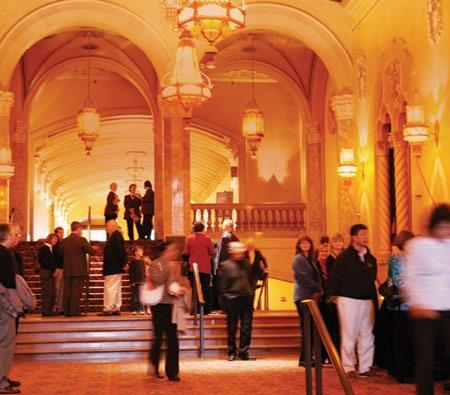
Dec. 14 ECYS Holiday Concert
Dec. 20 YaoYong Dance 15th Anniversary Gala
Jan. 10 2014 CreaTiVE Awards
Jan. 16-18 Nakamatsu Plays Ravel & Gershwin
Jan. 22 Changing Boundaries: The History of San Jose
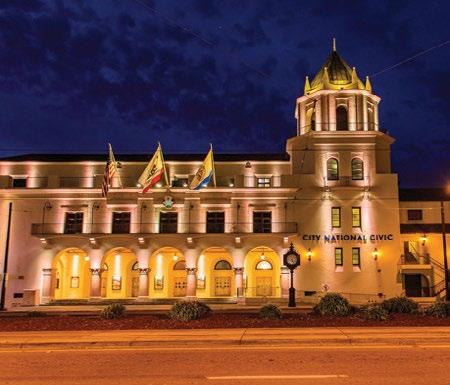
For ticketing and venue rental information, visit:
www.SanJoseTheaters.org
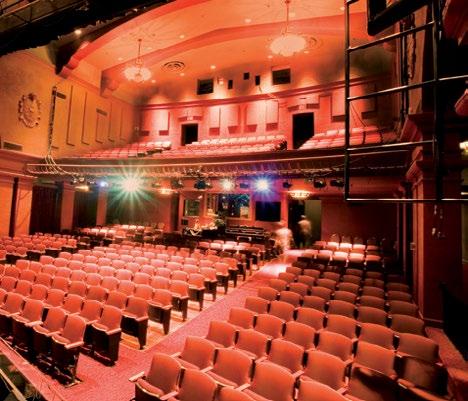
sister cIties

President Dwight Eisenhower established the sister city program in 1956 to foster global awareness and peaceful relations. For the next six issues, a design team from one of our city’s sisters will present their view of their home town.
Tainan, Taiwan
Written by Henry Huang
Tainan City is a beautiful and historic city located in southern Taiwan. Known for its history, its temples, its traditional lifestyle, and, of course, its snack food, Tainan is a wonderful place to spend a few days, but an even better place to settle down in for a while.
Originally the main site of a Dutch and Japanese colony, Tainan was Taiwan’s first city. In the early part of the 20th century, the Japanese undertook a program of urban planning, restructuring the entire city in the process.
If you wander the streets of this culturally rich, yet traditional city, you’ll find some of its most beautiful features tucked away in alleys and preserved in historic sites. Within the city limits, there are over a thousand Buddhist and Taoist temples. Many of these temples are the oldest buildings in Tainan, influencing the early design of the city and playing an important role in the development of its communities as well.
The Food
Okayama,
Eating in Tainan is a delicious adventure! You will find many opportunities to taste the snacks the city is known for, as well as to sample its more traditional fare. In the morning, for example, you can visit Yongle Market, for Taiwanese delights such as rice cakes, Gua-bao (Taiwanese hamburger), beef soup (fresh raw beef slices in a special stock), fresh herbal tea (good for health and mood), and spring rolls (completely unlike what you’d find in a Chinese restaurant, this is the gourmet version, more like a wrap or burrito). For the ultimate rice cake experience, check out Fu Sheng Hao. Be
seated and be ready to enjoy. This signature dish begins with a base of rice milk, to which fire shrimp, diced pork, and homemade minced pork stew are added. After being high-power-steamed for 15 minutes, this delicious meal is ready to be served.
The Shop & Gallery
Your next stop might well be the Hyashi Department Store, one of the most popular shopping spots in Tainan. The building that houses Hyashi’s was the second department store established in all of Taiwan, in 1932, during the Japanese colonial period. At that time, it was the most famous place in the country to shop. When the Japanese retreated, the building was used for a time for other purposes by the Taiwanese government. In the 1950s, the building was shut down and it fell into disuse for the next 60 years. Then, in 2010, the Tainan city government restored the building, collaborating with a local department store to reopen it again in new splendor. In Hayashi’s, you will find both traditional and contemporary designs on display, featuring the work of Taiwanese artists and well-known designer brands. Hayashi’s both looks to the past and embraces the future.
Next to the Hyashi Department Store is Dou Maison, an historic building in which a cafe, gallery, fashion boutique, and upscale furniture shop all reside comfortably together under one roof. Dou Maison is the perfect place for afternoon coffee and a delectable shopping trip.
10
José, Costa Rica
San
Japan
Mexico
Taiwan
Ireland
India
Russia
JOse’s Sister Cities
Veracruz,
Tainan,
Dublin,
Pune,
Ekaterinburg,
San
Another famous stop along your tour is An-ping district. In An-ping district, you will find seafood galore. The culinary highlights of this area are oyster omelettes, fried oyster, shrimp roll, and shrimp cracker. You might visit Chen’s Oyster Roll, for example, for some delicious take-out. And, naturally, there’s no better place to eat seafood than the beach. So, after stopping off at Chen’s, you might head on over to the Sunset Observation Platform, to watch the, well, the sunset. This is a popular spot for friends and family to relax in the evening.
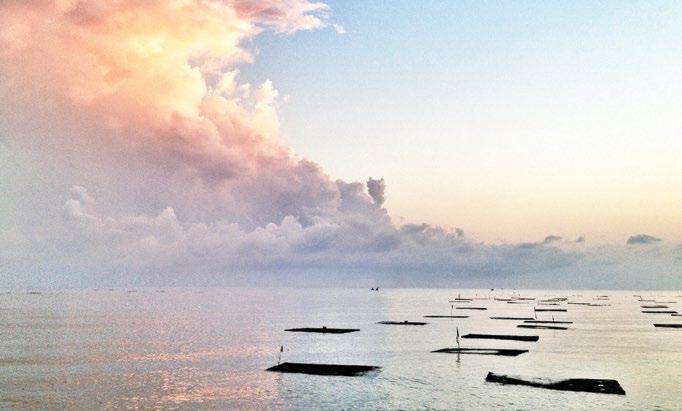
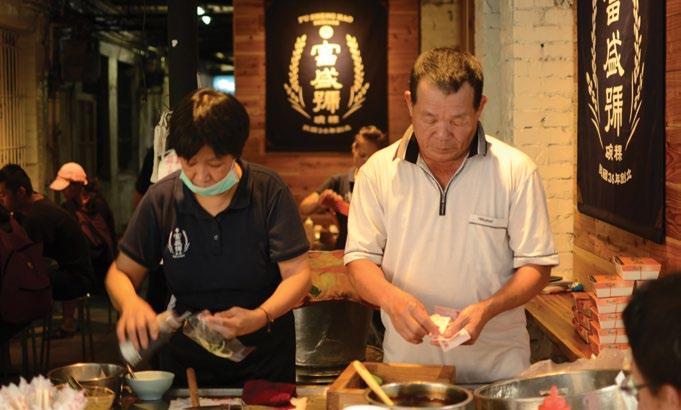
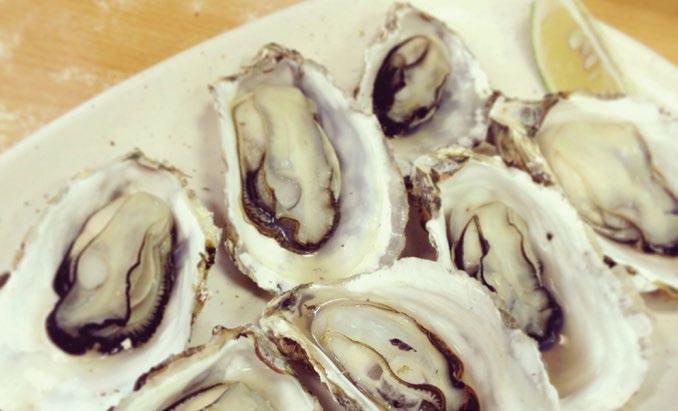

The
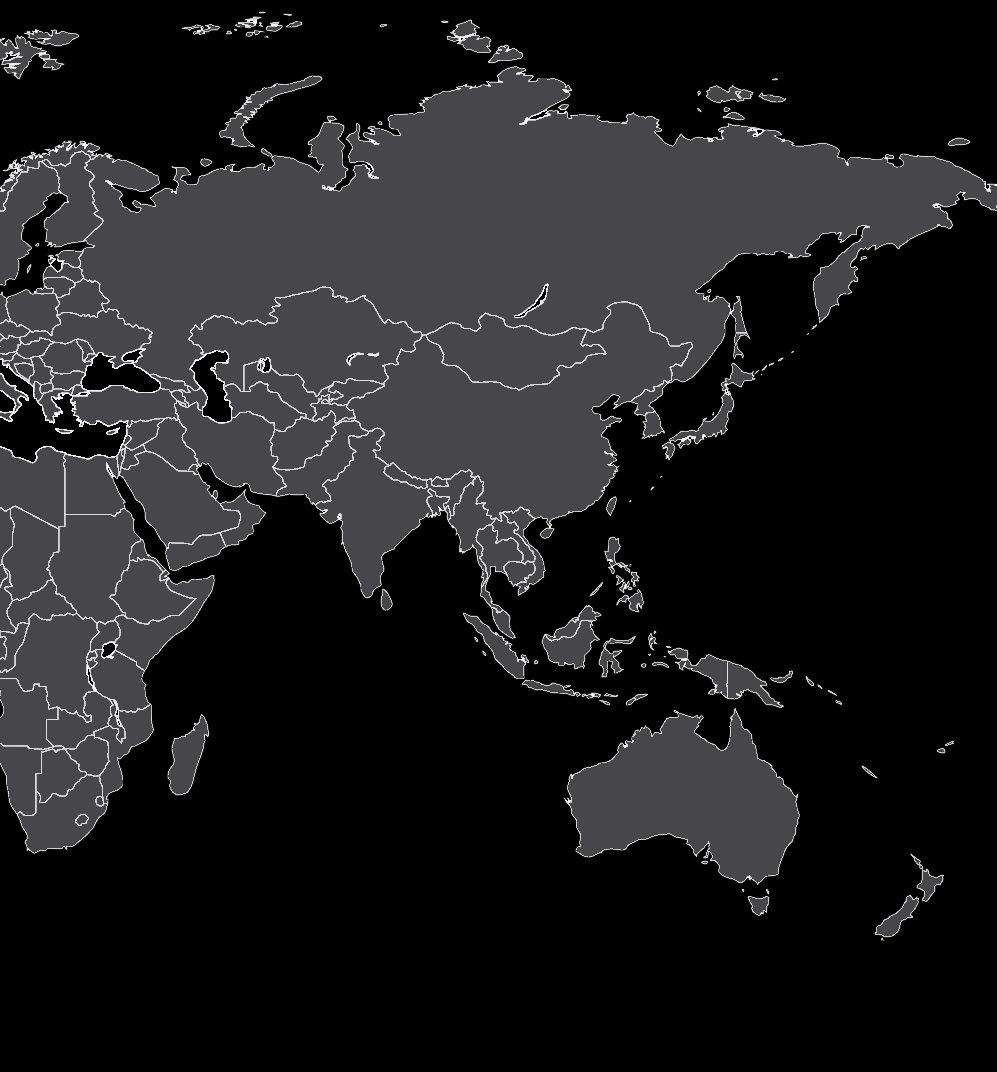
A sensational cocktail is always a good way to close out the day and welcome the night, and TCRC serves the best cocktail in town. With a wide variety of spirits and fresh fruits on hand, they can satisfy nearly any request. You might spend the rest of the evening along Shennong Street. This is a street with a rich history, and you will find many stories here. Below its brick road, a stream once ran. Today, the shops along Shennong offer the blend of old and new that make up all of Tainan.
Drop on by. Tainan will never disappoint.


henrism commercial art is a Taiwan-based design company. Proficient with brand identity, visual design, and merchandise development, we work in partnership with our clients, delivering innovative solutions across a wide range of applications. We are passionate about our work and the impact it can have for our clients in the marketplace.
Shennong

11
The Water Front
Night
Henrism Commercial Art
1 2 3 4 5 6
henrism.com
1. Yongle Market The junction of Guohua St. and Minzu Rd., Tainan City
2. Fu Sheng Hao No.8, Ln. 333, Sec. 2, Ximen Rd., West Central Dist., Tainan City 700
3. Hyashi Department Store No.63, Sec. 2, Zhongyi Rd., West Central Dist., Tainan City 700
4. Chen’s Oyster Roll No.786, Anping Rd., Anping Dist., Tainan City 708
5. Sunset Observation Platform Anbei Rd., Anping Dist., Tainan City 708
6. Dou Maison No.33, Zhongzheng Rd., West Central Dist., Tainan City 700
TCRC No.117, Xinmei St., West Central Dist., Tainan City 700
St. Shennong St., West Central Dist., Tainan City
BUILDING A MONUMENT for the Valley of the heart’s delight
When Santa Clara Valley was known as “The Valley of the Heart’s Delight,” agriculture ruled, with fruit trees filling the land as far as the eye could see. Until the 1960s, Santa Clara Valley was the largest fruit producing and packing region in the world. But as technology companies began moving in, the orchards dwindled. Today, even in the midst of the new technologically based Silicon Valley, the county still produces hundreds of millions of dollars’ worth of edible crops from its farms. But the farming culture and the memories that were so prevalent in decades past have faded with the people who lived them. As new generations come into the valley, these old stories gradually fade away as well.
There is no one space today where visitors can go to learn about the orchards that once dominated the valley and the fruits that filled them. There are bits of the valley’s agricultural history scattered here and there throughout the area: some at History Park, some at the Martin Luther King Library, others online. But there ought to be an agricultural epicenter for a valley this steeped in agriculture history.
One idea is to create a museum of agriculture whose building itself draws from nature, using organic architecture. Organic. A word synonymous with plants, fruits, vegetables, animals: life. Organic architecture explores the symbiotic relationship between human habitation and the natural environment,
with buildings that simultaneously fit within and replicate nature. What better design for a building that pays homage to the bounties of nature in the valley, than a building that itself emulates a living organism?
The overall exterior design of the museum would be triangular, like a wedge of pie on its side, with a living roof. At the entrance, visitors would be greeted by a two-story glass wall with a terrace wrapping around to the side. On the opposite end, the building would be buried, providing a subterranean level for visitors to look through glass walls at the roots, worms, and other living things in the underground soil. Throughout the building, the materials used would draw upon the materials of an orchard, a mixture of wood and glass, allowing the outside environment to blend seamlessly with the interior.
A museum such as this would have to be set in an orchard. The optimal setting? Santa Clara County’s newest park, Martial Cottle Park. Martial Cottle Park sits in the middle of South San Jose, on land donated to the county and the state after the last Cottle family member died in 2013. On the 280-plus acre plot sits a fruit orchard.
This museum, its modern design a reflection of the present and future Silicon Valley, would stand in an historic orchard, one that was worked by the forebears of many of us who live here today. A sanctuary, crossing generations.
Inside, the museum would showcase the history of the valley through pictures, testimonials, videos, and other interactive displays, but it would also incorporate exhibits on relevant modern farming topics such as urban farming, resource sustainability, and adaptive water techniques.
Agriculture has become a complex industry, and a museum like this would be a benefit to all. School classes might come on field trips to learn about the benefits of home gardens or to pick up practical lessons on working an orchard and picking the fruit. There could be areas designated for drying fruit, where visitors could see the drying process firsthand. The building would adapt to the needs of the people coming through its doors, a key principle of organic architecture.
Creating a modern museum of agriculture should become a priority for Santa Clara County, as urban growth continues to spread, filling in land throughout the valley. Now is the time to recognize the importance that agriculture has had, and will continue to have, in our valley. This building would represent the transition from an agricultural to a technological society. It would be a monument to the accomplishments of generations past, who toiled the valley’s fertile ground. What was once the fruit capital of the world has become the foundation for what is now the innovation and technology capital of the world.
12
Story by Mark Haney Illustration by Lenin Olavarria
Organic architecture explores the symbiotic relationship between human habitation and the natural environment, with buildings that simultaneously fit within and replicate nature.
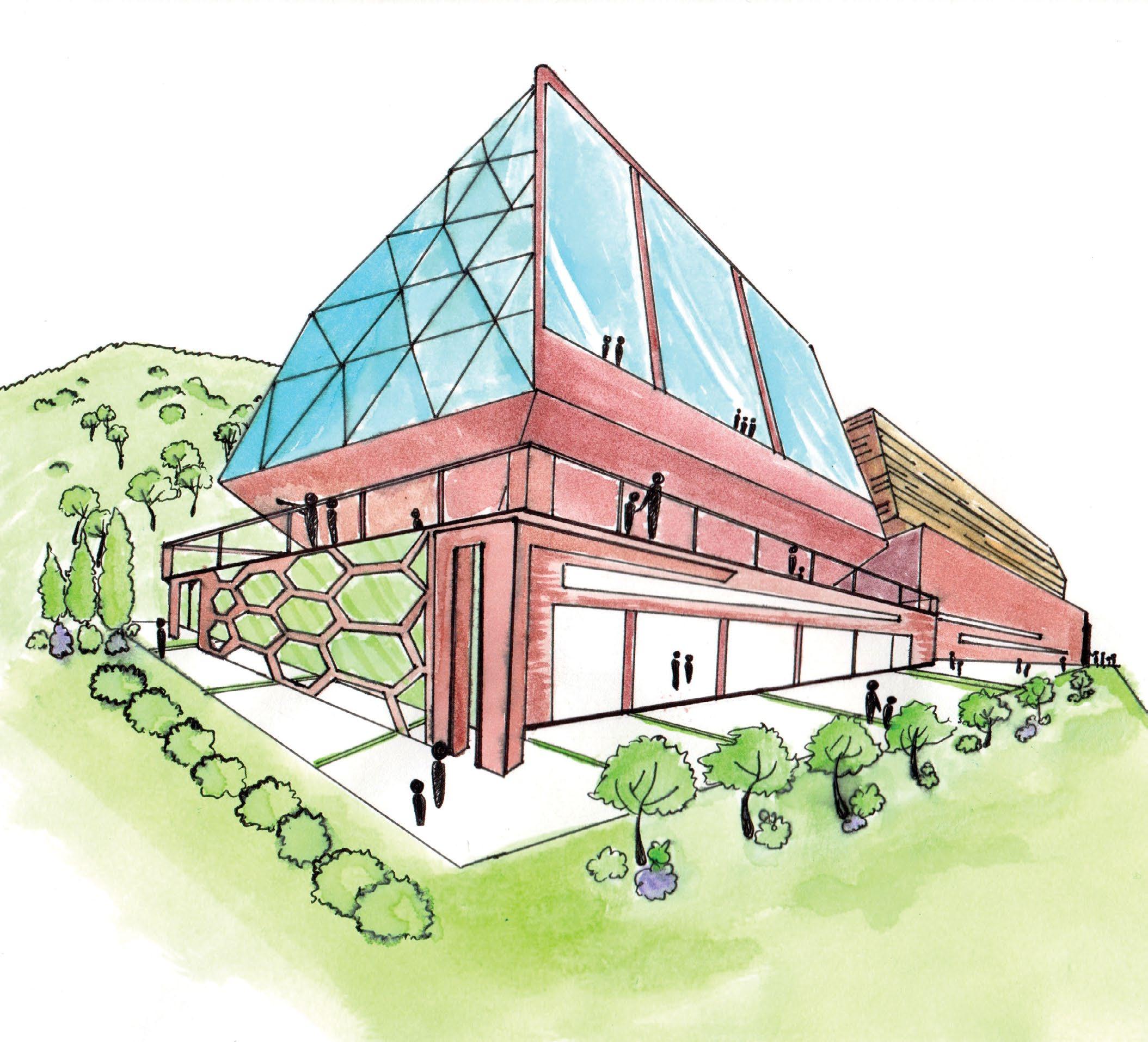
13 bit.ly/MartialCottlePark Martial Cottle Park 5283 Snell Ave San Jose, CA 95136 408.355.2200
CHASING BOUNDARIES: THE HISTORY OF SAN JOSE
Norman Kline remembers the San Jose of his childhood: a bustling downtown where he easily earned after-school money shining shoes and selling papers on street corners, where giant department stores decorated their windows for the holidays, and families put on their finest threads for a Saturday afternoon of shopping. Kline’s love for his hometown shines through, as he speaks of where San Jose has been and where it’s going. “What’s fascinating,” he explains, “is this recurring pattern in our city’s history that shows remarkable innovation. Even in difficult times, it is how we responded in those moments that says a lot about our character.”
This coming January, San Jose’s rich history comes to the big screen with the premiere of Chasing Boundaries: The History of San Jose, the story of the working people, the political leaders, and the dreamers who built the city. Produced by CreaTV San Jose, Norman Kline Productions, and History San Jose, the film debuts at the elegant California Theatre. The first feature-length documentary on the city’s history, it showcases over three hundred archival photographs, illustrations, and maps. It is narrated by Peter Coyote, whose voice is familiar from his recent work on The Roosevelts, and its rousing original score was composed by Grammy-nominated Robert Berry of Soundtek Studios.
At its heart, this film is about people. It’s about the people who came together to create the film and the people whose stories it tells.
Alida Bray, President and CEO of History San Jose, says that when she moved here, she was surprised by the lack of formal storytelling, whether in film or books. “This is what
has really been missing,” she says, “considering that we have the largest regional historical collection in California.” This documentary had been the dream of many in San Jose who wanted to study and preserve its complex history, but it was Kline who made that dream a reality. Suzanne St. John-Crane, CEO of
about the city’s early denizens. San Jose’s famed daughter, Sarah Winchester, for example, was not the occult-crazed madwoman associated today with Winchester House. “She was a highly creative and educated woman. The Winchester House was her playhouse, which was an impressive seven stories high at one time.” After Winchester’s death, it is believed that the property was sold to a developer who either fabricated or greatly embellished the stories of séances, hauntings, and insanity that we know today. “We should really treat [Sarah] better,” Kline argues.
CreaTV San Jose, says that while there was widespread excitement among partners and sponsors, it was Kline who knocked on doors and raised the capital necessary to fund a professionally produced documentary.
The film quickly became a passion project for the partnership, as History San Jose offered its rich collection and network of community experts and CreaTV provided expertise and a professional-grade studio. Working on the film “was like peeling back an onion,” St. John-Crane explains. “The more first-hand accounts we heard and the more I learned, the more I came to respect this amazing place that has always been a leader in innovation.” Bray, who was also surprised by how many firsts occurred in San Jose, argues that the city really “led the way in numerous ways, not just in California, but the world.”
Kline believes that viewers will be astonished by the stories that have been uncovered, stories that often correct misapprehensions
The film’s story, reaching back to 1797, is crafted around the three themes of urbanism, immigration, and innovation. And it doesn’t shy away from some of the more difficult chapters. As St. John-Crane notes, “it’s not always pretty, but San Jose dealt with mistakes and trying times in innovative ways— and that shows through in these stories.”
In the end, this film is really a love letter to the city. Kline believes that the documentary will make the people of San Jose proud of their home and the men and women who built it. “And that matters to the future,” Kline says, “because people won’t grow businesses or give to non-profits without civic pride.”
The film premieres this January, but San Jose’s story doesn’t end there. With resources like History San Jose and CreaTV, the people of this city will continue to recount and document its past, in an effort to help shape its future.
14
Story by Kate Evans Photography by daniel garcia
THE DOCUMENTARY FILM
“AT ITS HEART, THIS FILM IS ABOUT PEOPLE.”
The first feature-length documentary on the city’s history, it showcases over three hundred archival photographs, illustrations, and maps.

bit.ly/sjdoctickets
facebook: sanjosehistorydoc
15
MARY SOUZA the process in painting
After a few very friendly introductions, Mary Souza jumps right into explaining her art and journey, “I used to say it takes 67 years to do a painting, but now I just say it’s taken my entire life.”
That pretty much describes Mary, not just that her work is the outpouring of her personal history and journey, but that she jumps right in as well. Even at the time of this interview, Mary was packing for a month-long residency in Rome, where she was looking to explore new directions in her abstract work.
How did you get into painting?
I was a stay-at-home mom. I decided to do that in 1975, with my first child, at the height of feminism with Ms. Magazine. Of course, I was counterculturalist. When I went back to De Anza, at age 40, I thought, “I graduated from Berkeley. I taught school.” But, I was terrified. So, I made my first class a drawing class. I didn’t want to start with Art History, because that’s reading. I know about reading and writing. I like that. That’s safety. I wanted to start with what’s not safe. To me, putting pencil or charcoal to paper, expressing myself that way, was pretty scary.
Had you drawn before then?
I had, but not for a long time. My interest was more in singing. My instructor, Lee Takang, made a statement. “Some of you can do other things well, but this is scary to you.”
I said, “Oh, yeah. I can stand on a stage and belt out country, bluegrass, and twangy stuff.”
“No problem, but this is scary.” He
said, “Just put that same feeling and energy into your drawing.” I wasn’t sure what he meant. Now I know.
How would you explain your work? People ask, “Why do you only have one figure?” I think that has to do with a sense of spirit. These figures are not in any kind of landscape that you can place. They may be a little more ethereal, but they’re also grounded.
For instance [pointing to “Muse Through Red,” pg. 16], this red had to be there to push against the figure. It grounds it to me. It grounds it in a space that isn’t anything identifiable, because then we would have a story that’s not about you and the interaction with the work. That’s my feeling.
A solitary figure, the viewer looks at it. Maybe you see more of yourself, or you see an engagement with something beyond what this human representation is. Whereas if there were two or more figures, than you have a story. You want to know that story. And that story tends to be about about them.
When I’m painting, it’s more about my engagement with the paint and a sense of a spirit or a sense of... something.
A feeling, an experience?
A human experience or human endeavor, let’s put it that way. Not necessarily about any particular event. What I do, I usually start out with a brush with some indigo blue paint. A brush that’s old, stiff, and horrible, which I love. That’s about
the only time I might use a brush. Otherwise, I use a palette knife in my hand, and an oil stick. I’ll start out scribbling. That’s just the beginning. It’s the baby painting. I guess I have a feeling like it has to have more life and have been through enough.
To me, some of the splatters, splotches, and things, that’s just life. Life’s gone on. There’s stuff that’s happened. That’s how we are. A lot of stuff goes on. It’s sometimes messy.
How would you describe your “voice?” My voice is not about being pretty or safe, but it’s about a strength or a beauty that pervades everything. Even if there’s pain or sorrow, there’s a beauty in human interactions during that time. It’s about people. It’s about the creative act and the process.
I think that’s why I like the figure. People react to a human. You have to have...
An arsenal of life experiences? ...yes, and a structure maybe, but I don’t think you have to have it rigid. In fact, in many parts of life, it’s not wise to try and figure it all out ahead, because it doesn’t...
doesn’t work out the way you planned. ...yes, but it works out. Go with where your intuition or the spirit carries you. Listen for that. Count on that. Counting on it, I think, is the hard part. Trust that that will happen for you. Use what you’re given. I’ve always felt that way.
16
Interview and Photography by Daniel Garcia
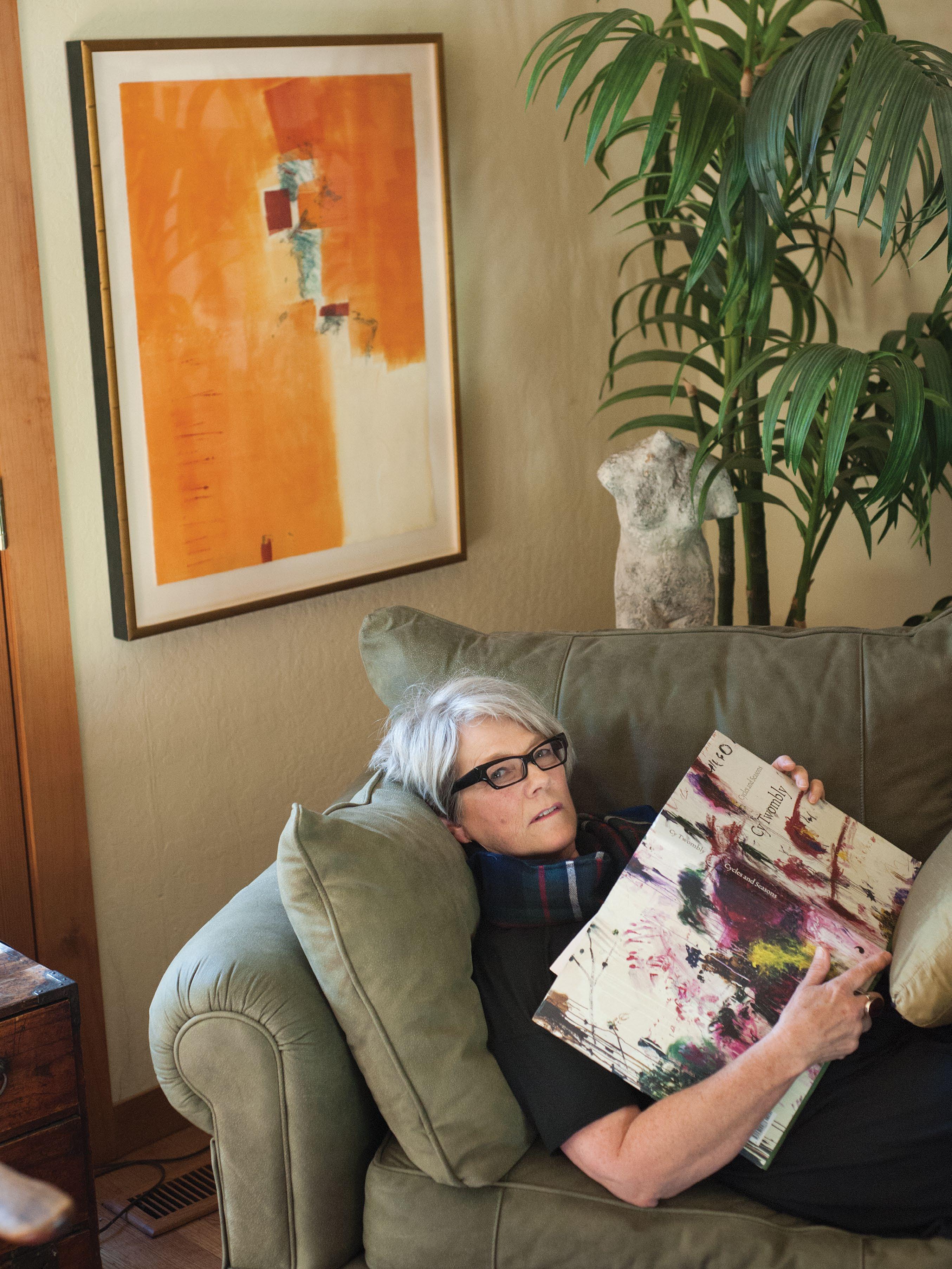


19
“Muse Through Red” (Above) “Red Spirit” (Left)

20
“With Wasabi”
“Melange”

msouza.com
info@msouza.com
21
DECAROLIS TO DECCA
We’ve all heard the story: someone working at a company gains knowledge and experience, outgrows their role, and begins looking for the next challenge or opportunity. In this valley, either they get headhunted, or the person is let go because the company or their superiors feel threatened. Fortunately, that was not the case with Vincent DeCarolis and Sheila Hatch. DeCarolis saw Hatch’s abilities and allowed her to grow, eventually making her a partner. Now, DeCarolis has stepped aside and given her the reins.
When did DeCarolis Design begin?
Vincent DeCarolis: I started the business in 1991, with just myself and a graphic artist, and that was it. The focus wasn’t on design or advertising campaigns. It was just on selling anything you could, from promotional products to printing.
But then I said to myself, this needs to change, because the business was changing. I looked for somebody to make that change. I started to recruit a gentleman who was a great director from Oracle.
I was meeting him up near Oracle and various places. He didn’t seem interested. I said, “I want to change the business, I want to take it to a different level. I want to grow it.” He always met with me, but didn’t express a lot of passion. But I was about to make him an offer.
Sheila Hatch: I was running the West Coast Facilities Management Program for Applied Graphics Technologies, and I lived here in the Rose Garden [neighborhood]. The commute to Foster City was killing me. I wanted to find something closer to home. And, I wanted to get back on the creative side of things.
I saw this little tiny ad in the classifieds for this company that was looking for an art director. I thought, OK, this is perfect. It’s around the corner from my house, sounds fun and interesting.
I called around until I found a couple of people who knew Vince and they all said he seemed like a good guy and that I should apply… I sent him my resume. He didn’t call me! So, I actually did something I normally would not do. I called him up, and he wouldn’t take my call, because he was already trying to hire this other guy.
He wouldn’t take your calls?
SH: Yeah, I actually left a message and referenced a mutual photographer friend of ours. I said, “Dave Motley said I should call you and you should talk to me about this job.” Then, Vince actually called me back and he said, “Who are you?” And I just told him, “I am perfect for this job and you need to meet with me.” So he did, and then hired me as art director in 1999.
What were the things that you wanted to change in the business?
VD: They really were to change the focus from just plain selling anything we could, from supplying print services or trade signs, to actually developing some campaigns...
I knew we needed to become strategically creative and really help move companies forward. In that case, our value becomes greater.
SH: It wasn’t easy when Vince hired me, but he was very honest with me. He had a small group of people here, maybe about eight or nine people, and they were a couple of family friends, and his daughter worked here at the time. When he hired me, he said, “Look, I need to bring in someone at a very senior level to help take advantage of what’s going on in the market. I have this vision for this company. I can see where we could go, but I need a whole new team, essentially.”
Together we built this business to what it is now.
How has the transition been moving from Decarolis Design and Marketing to Decca Design?
SH: Vince and I aligned pretty tightly in the way that we saw the company evolving and growing over the years.
22
Interview and Photography by daniel Garcia
 Shelia Hatch
Vincent DeCarolis
Shelia Hatch
Vincent DeCarolis



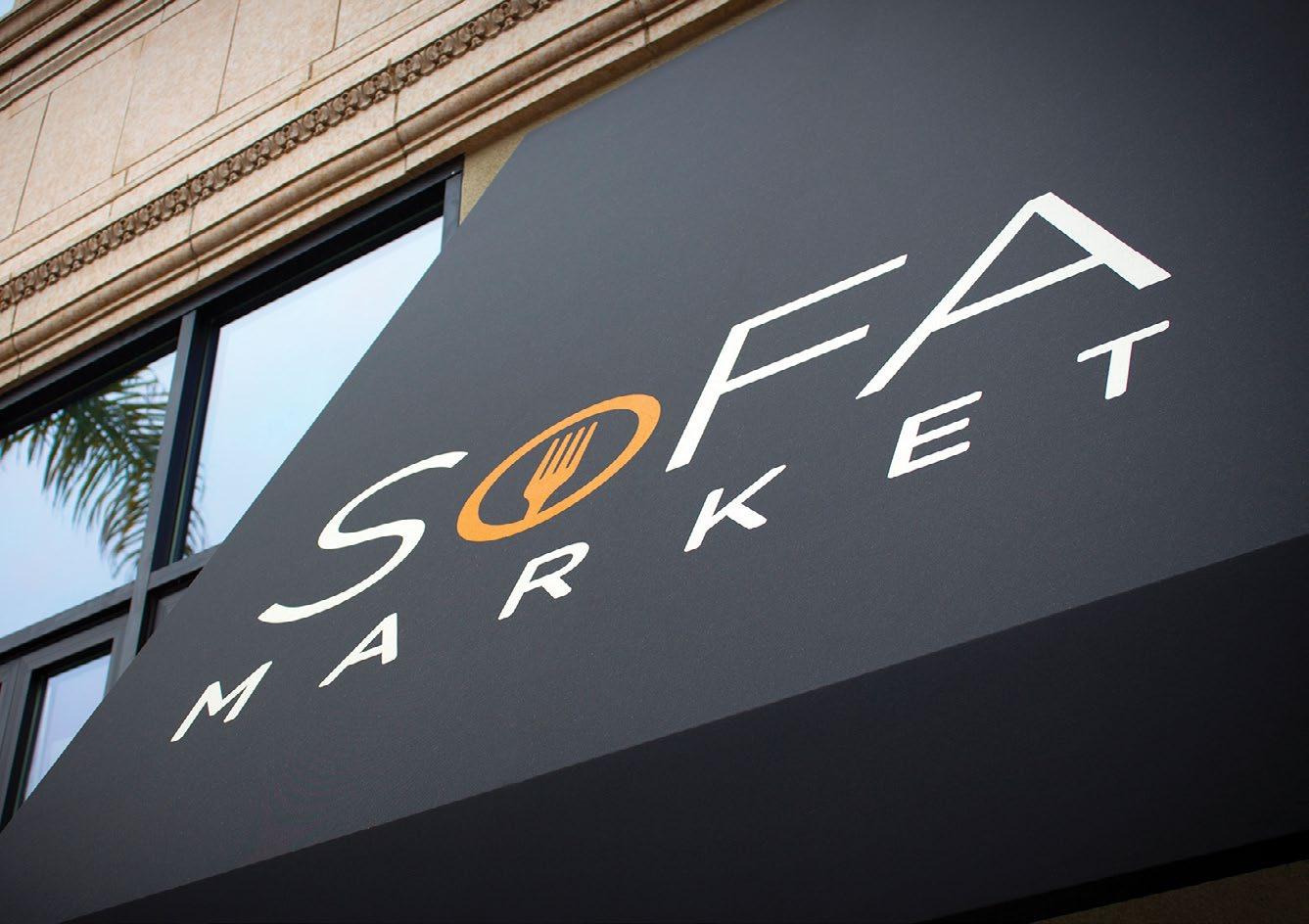
For years and years, we’ve had the same vision for this company and where it would go.
Vince hired me as the art director in ‘99, and then I became vice president of creative services, and then executive vice president, and then president, and I’ve been a partial owner of the company for many years now. Since the mid-2000s.
Two, three years ago it became very clear to me that I was ready to have my own agency. Whether that was going to be buying Vince out or starting my own company, I was ready to do that. We talked about it a lot, and we decided the best thing was for me to buy Vince out. It was best for everyone. It was great for Vince, it was great for the staff, it was great for the client.
The reality is that the transition has already occurred. It’s occurred because we’ve been very strategic about the way we’ve done it together, because we both wanted to accomplish the same thing. I think that’s why most companies don’t do well in these transitions, because they don’t have aligned goals.
What’s next for you, Vincent?
VD: My daughter has two restaurants in Victoria, Canada. She’s opening up a third. As a matter of fact, she just talked about a lease this weekend on the third building. I’m going to go up and help her for a while on her restaurant.
As a chef, or waiter?
VD: [Laughter] No, more with business development and marketing, something I have some experience with.
How do you two handle “work-life balance”?
VD: I think that term is a little bit loaded, because it’s more of an integrated lifestyle rather than a life-work balance.
SH: Yeah, that’s true. Our people work remotely.
VD: Yes. Like the guys that I ride my bike with. They’re all executives. They’re all Silicon Valley executives, every one of them. Every one of them has their iPhone with them while we’re riding, and everyone will check when we stop to have a break. It’s not a balance. It’s an integration. Well, because everyone’s excited about what they’re doing.
SH: This isn’t a 9 to 5 gig. The thing is, if that doesn’t fit your life, you shouldn’t...especially in technology. There are other sectors that are going to be a little bit more of a traditional model, but certainly not the tech sector.
What advice would you give to someone looking to get into the creative communications field?
SH: Don’t, go to medical school! [Laughter]
In terms of advice, I would say, get yourself in a role where you can learn. You want to work for someone that you can really believe in and learn as much as you can from, and work really hard at it early on.
I’m amazed when folks coming out of school want to meet with me, which they do a lot, and they tell me how they want to come and run the creative department or something crazy. It’s always amazing to me that they’re not interested in learning. Really, it takes a long time to get good at this business.
I have a designer here who started as an intern. She applied at a time when we were running an ad actually for a senior designer. It’s interesting. I looked at her book, and her book was great. I called her in and I said, “Obviously you’re not qualified to be a senior designer, and I don’t normally hire interns. But I liked your work and was interested in talking to you.”
I said, “What would you do if we gave you some sort of opportunity here?” She said, “I will do anything you need me to do to come and learn from you and be a part of this company.” So, I hired her. Now she’s been here for several years and she’s great. She’s gotten a couple of promotions.
I look for that when I’m hiring people at all levels. Someone who’s going to be a good fit creatively and who has the same ethics that we have.
Why “Decca?”
SH: We wanted to leverage our existing brand equity and felt that it was very important to maintain our existing URL (decdesign.com) and email addresses, while creating a new identity that was bigger than the name of any individual team member.
We also felt it was critical that the name be short, memorable, and [that it] appropriately reflect our core values. No small task.
Decca is a British radio navigational aid in which a fix is obtained by determining phase difference between continuous-wave signals from two synchronized fixed signals. We loved the idea of navigation and connecting two points, because at the end of the day, that’s what we do.
25
decdesign.com 476 S. First Street San Jose, CA 95113 408.947.1411 twitter: DeccaDesignTeam
“Most companies don't do well in these transitions because they don't have aligned goals.” Sheila Hatch
What started out as a consulting business has grown into a premier events company.

FIL MARESCA On THE SoFA
Whether they realize it or not, anyone who has been to an outdoor festival in San Jose in the past 20 years has probably encountered Filco Events, the aptlynamed production company headed by Fil Maresca, quietly one of the city’s biggest drivers of cultural community events since he moved here in 1989.
Maresca started his career working in nightclubs in San Francisco. In 1986, he was managing a club called the Oasis, and they were looking to open a new location in San Jose. Maresca was sent to scout out the downtown area to determine if it was a viable spot for expansion.
“At that point, the city was being torn up for light rail,” Maresca recalls. “There were a lot of problems downtown. But we looked around and thought it was a good time— there was a lot of opportunity in San Jose.”
Through researching for the Oasis, Maresca got to know other business owners who were also hoping to bring a scene to downtown— and who would go on to form the San Jose Downtown Association. They wanted to transform what had become something of a red light district into a more livable place. So when another venue—the Pussycat Theater on the corner of First and San Salvador—shut down, Maresca was recruited to take it over, renovate it, and launch a new club of his own. In 1989, FX opened.
“The district became kind of a doit-yourself, anything-goes frontier,” Maresca says. “We had coffee shops, art galleries, movie theaters, San Jose
Stage, City Lights, and MACLA... all of this culture started happening all by itself. The Redevelopment Agency had a name for the neighborhood: the Market Gateway Arts & Entertainment District, which really rolls off the tongue. We came up with SoFA [South First Area], so we went to [Dan Pulcrano at] Metro, and he said, ‘I think we can make that work.’ He gave it to his writers and they started including it in everything.”
Thus, the section of South First Street from San Carlos to Reed had a new name, and with it a new identity. Soon, the SoFA Street Fair launched, celebrating the music, the art, and the culture unique to the neighborhood. Maresca’s role in staffing these events came about almost by accident: he happened to be the guy on the committees who knew about permits and staffing for alcohol sales.
“Filco was originally a consulting business and it kind of morphed into an events company. I started with volunteer coordination with beer servers, and then that expanded.”
Maresca left FX in 1995 to run Filco full-time, bringing his expertise to events like Music in the Park, the San Jose Jazz Festival, America Festival, and many more—some of which have come and gone, changing along with the economic landscape and bursting bubbles of the region’s past two decades. Right now, downtown is clearly back on the upswing.
“The SoFA district—I gave it the name, and I’m very proud of that. But the reason it came around in
the first place is because it was community-based. There was a community of people who really wanted it to succeed, and they were willing to put their businesses on the line and work together to make it succeed.”
Today, Filco continues to produce Music in the Park and San Jose Jazz Summerfest, and has worked with new events like the Electronic Sriracha Festival. Maresca also relaunched the SoFA Street Fair this summer and has been hosting a monthly outdoor food truck gathering called the SoFA Supper Club. He eagerly points out the efforts of others to continue creating events like SubZero and First Fridays, and he has even more ideas for future collaborations.
“I’m all about working together with people to figure out how to make the experience better,” he explains. “My name is on the company, but my company isn’t on the event. You don’t walk around and see big banners that say, ‘Filco is here.’ It’s not part of what I do; I work behind the scenes. I build a community. When you’re creating a large scale event, you take a bunch of parks and streets and you close them down and you provide music, you provide art, you provide toilets—you create this whole other world, then tear it all down. And everything goes back to normal. It’s a pretty cool thing, what I do.”
27
Story by Nathan Zanon Photography by Gregory Cortez
fil@filco.com
filco.com
THE VOICE HEARD ‘ROUND THE BAY AREA: CHUY GOMEZ
Interview
The sound of Chuy Gomez on the radio is synonymous with the Bay Area. Some Chuy fans might also know him from his hour of music on CMC, a cable TV show from 4 to 5pm on local channels. His ability to connect with his listeners and the community have made him a popular local celebrity, and when he was unceremoniously let go from his 20-year stint as a DJ with KMEL, his already faithful fans rallied around him even more. Now he’s back in his groove at HOT 105.7, doing what he does best.
Tell me about your background.
I was born in Mexico and came here before kindergarten. I was raised in the Potrero Hill neighborhood of San Francisco. I grew up with radio always on at the house. I would call into KBRG everyday to request songs for my mom: Los Bukis, Los Caminantes, whatever was hip at the time. The DJ began to recognize me. He invited me, this little boy that called everyday, to come down and check out the station.
When did you first try radio out?
I was interested in it by being around music. In high school, I started deejaying house parties. I never really wanted to do radio. I’d pretend to be Lee Perkins. People would tell me, “You sound like him.”
I’d MC events, and this led me to my reintroduction to radio. I had a buddy whose sister was having a quinceañera. I didn’t know he was a friend of Marcos Gutierrez from KSOL. He came to the quinceañera. He said, “Nobody does this but me here.” He was the bilingual guy on CBS. So then I became his intern. Before you know it, I’m hanging out for his show, and the show after. So then I start driving the vans, and that led to a weekend position eventually. It’s crazy because I was just a kid hanging out with Marcos Gutierrez. Then I became a DJ.
At what moment did you realize that you liked doing radio?
I knew that I loved music coming out of my radio. Just being there, it morphed into something. I didn’t know I wanted to be on the radio. Dr. Demento, Wolfman Jack—I had my local celebrities I liked. And then being able to be in a space where I saw these people was
something else. I wasn’t starstruck, but I was this young guy hanging out with these vets. I learned a lot of game from Barry Pope. He and I spent a lot of time in the station vans doing community work
Radio is not just about performing, it’s also about connecting…
People have grown up with me in the past 20 years. I’m almost like the neighbor that you know. I’ve been to your schools, I’ve been to your dances. You’ve seen me in different situations. Now you see me walking through the fair. Some of these people don’t know I’m on the radio because people have been locked into three specific stations in the market. Unless you’re scanning through the radio, you don’t know it’s there.
Now it’s all about grassroots again. Shaking hands, kissing babies.
When did you feel like you could make a name for yourself? When did you say, “I’m going to be more public?”
I was always the radio guy that was there playing music. Then they hired Mancow to do mornings, and I think by that time we had switched over to be WILD 107. He heard me and said, “You have a lot of energy, want to be part of the morning show?” I’d do the morning show Monday through Friday. I’d be the street team guy, the morning show ambassador. I’d do call-ins to the station. It got me out in front of the people. Chuy became almost a personality himself. That allowed me to grow.
My girlfriend at the time got pregnant; my son was born in 1992. I ended up asking for benefits. I couldn’t get a raise to get my own benefits. At the same time, someone called me from KMEL. They said “We’re thinking of doing something, want to meet?” So we had a conversation. I told them my girlfriend just got pregnant and I needed to start making money. They said, “Well let me put something on paper for you…”
How’d you feel in that moment?
I’ve always taken life day by day. Then, I asked if I could get benefits. Oh, benefits come with the job. Okay, cool! So now I’m excited. But I didn’t want to leave WILD because I liked it there.
28
by Jen Myronuk Photography by Jay Aguilar
WILD couldn’t match KMEL’s offer, so I took the offer. They teamed me up with Rosary. We had the Chuy and Rosary show. It was growth. It was a godsend. I started doing nights for about 2 ½ years. Then it was a weird situation. They put us on the morning show. For whatever situation, that didn’t work out. So then I got the night show back. Then I went from nights to doing afternoons. Then Michael Martin, who was originally my music director at WILD, said he wanted to take what I was doing in the afternoons and do it in the mornings. I ended up doing mornings for over 10 years.
How did you find doing mornings in terms of the style?
For me, it was awesome because I didn’t have to do the whole bells and whistles… I’ve never been a fan of prank calls. While you’re stuck in traffic, you have music. I threw in some entertainment reports. We did great for the amount of time that we had. Up until August of 2013, when they walked in and, after 20 years, said, “We decided to go in a new direction.”
There was no warning?
I went on vacation. I came back and worked Monday through Thursday. I went into a meeting Thursday after I got off the air. “We decided to go into a different direction.” Oh, so no funky Friday tomorrow? That day was my last day.
In that moment, how was that news?
In radio, you never know when your last day is. You’re only as good as your last show. I never expected it. I
thought I’d graduate to KISS FM, to an older demographics station. It didn’t sink in. I cried more when I left WILD than when I left KMEL that day. It was a little surreal. I had Disney on Ice tickets that night with my daughters. I didn’t pay attention to my Instagram that day. People were going crazy, asking “What happened to Chuy?” That was empowering and reassuring and it felt good.
When did you get the call for HOT 105.7? They called and said they wanted to do afternoons. Awesome! I get to sleep in. They kicked off the station by playing Nelly’s “It’s Getting Hot in Here” nonstop for a few days. It felt like when you fall off your bike and you get back on, and you’re back in stride. You feel good.
Who are your big influencers?
I’ve always been an Ice Cube fan. He and Scarface are my all-time favorites. I interviewed Ice Cube in ‘94 or ‘95. That’s probably been the only time I’ve been in groupie mode. You watch him and you see his videos and you see what kind of figure he is, and then oh my God I’m standing next to him.
I’ve talked to everyone from him, to Snoop Dog, to Rappin’ Forte. It was an incredible time in hip hop. The golden era. The ’90s were the best.

Chuygomez.com social media: chuygomez 29
DOWN TOWN VINYL VIBE
needle to the groove
Allen Johnson, co-owner of Needle to the Groove on Santa Clara Street, in downtown San Jose, moves towards the turntable, his voice filling with excitement and passion as he places the stylus on the spinning record. It snaps with that familiar click of the needle slipping into the groove as the album begins. “I’ll take the dirt and the cracks,” he shouts over the nostalgic hiss. “That amplified sound tells you, you are about to get blown away.”
Johnson’s journey to co-owner of Needle to the Groove in downtown San Jose began with him as visual artist and producer, with a short side stint as a philosophy major. Having a lifelong appreciation of music, he recalls working the free CD of the month system by registering under various emails and then canceling to maximize the number of CDs he could receive without having to pay full retail price.
As that collection grew, he never expected to get into vinyl, but once he began producing and making music in his early 20s, he needed to find unique beats and samples that hadn’t already been used by other producers. That quest was shaped by advice given to him by his friend Ryan Officer: to look for records with good drummers, because when people put together a band, the drummer was one of the harder positions to fill. “If the band had a good drummer, the drummer was most likely playing with good musicians,” Johnson was advised. This strategy opened the door to various genres and to international music—and his collection grew to reach more than 10,000 record titles, a collection which he would later use to help launch Needle to the Groove, San Jose.
Though collecting music had been mainly a hobby, and part of his duties as record buyer for Streetlight Records,

30
Interview and Photography by Daniel Garcia

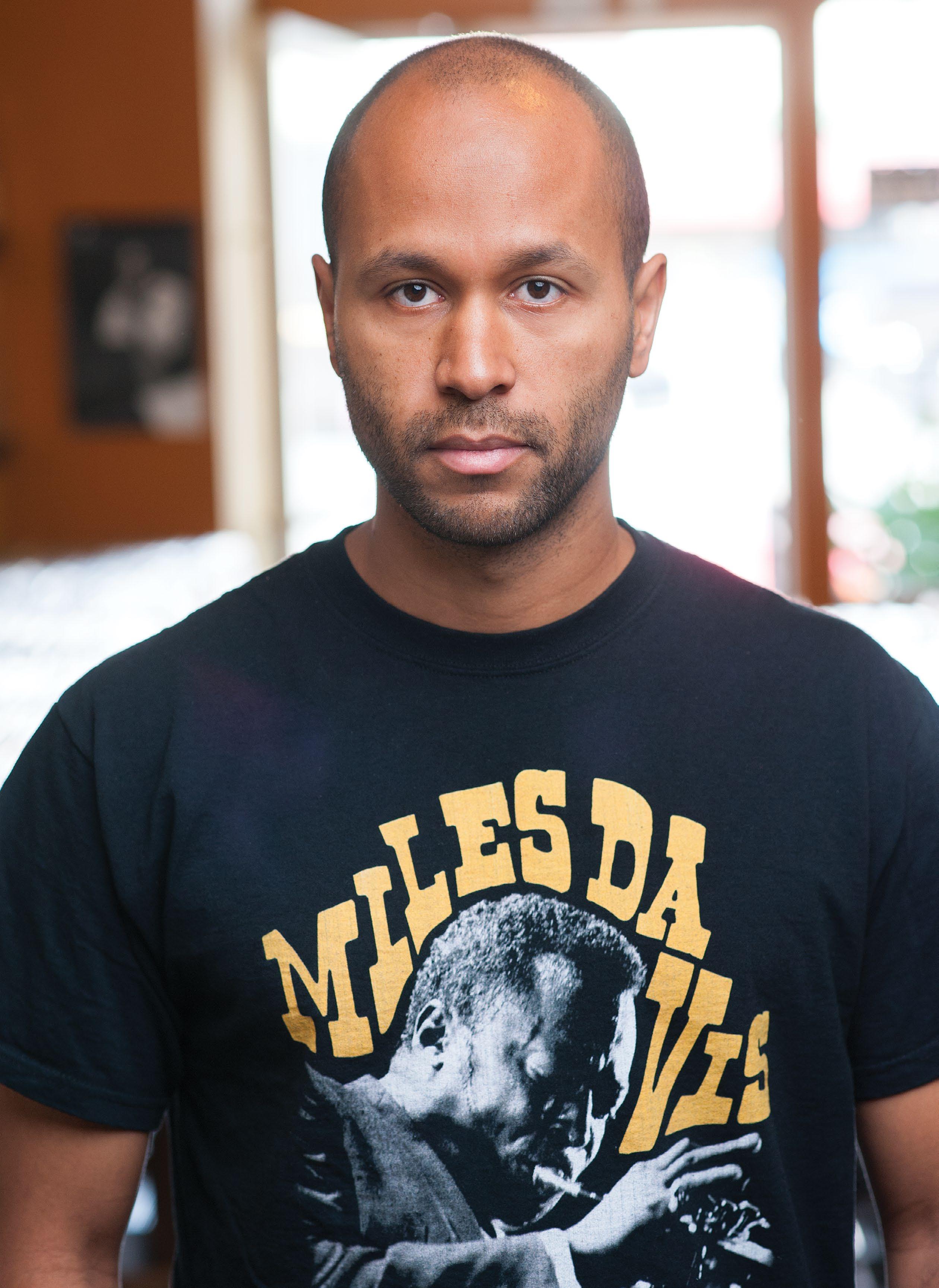
his wife encouraged him to take the plunge and turn his passion into a full-time job.
Admiring Dan Bernal’s NTTG Niles (in the historic downtown district of Fremont), where he traded and shopped, Johnson approached Bernal about collaborating on a similar store in San Jose. “The vibe, the atmosphere that Bernal has, is what San Jose needs,” Johnson explains. “And I want to bring that feel, that kind of the mom-and-pop, independently owned and operated, with a focus on better quality over quantity, style records. I like them in the bags on the shelf, like the listening station. The big retail chains aren’t doing that.”
Johnson and Bernal met over a period of few weeks, working out some of the business arrangements and the kinks to launch Needle in the Groove, San Jose, in July 2014.
“A big thing for me was to be in San Jose...A downtown area was something that we wanted. There’s already a record store in downtown Campbell. And, if you’re in San Francisco, a large metropolis, you don’t necessarily have to be downtown, you just need to be in the cool neighborhood. We looked at a few other areas—Willow Glen and Santa Clara by the university—but this area foot traffic-wise, visibility, the ease of access, all worked well for us.”
Partnering with Johnson is Michael Boado, who also DJ’s at the Blank Club every Thursday, as DJ Basura. Together, the two staff NTTG and are looking to help in the effort to boost the music scene in the South Bay.
And though they have been approached by Yelp, Metro, Facebook, and other downtown San Jose groups to do advertising, they are keeping with the “mom and pop” local vision. “We want to stick with the grassroots and help the smaller guys who are working hard to bring in those bands.” But look for them to be sponsoring shows at other venues and having in-store meet and greets with the right artist. For them, as Johnson says, “Sustainability, obviously, is number one. And slow, steady growth over the next 30 years. This is something I want to do until I’m done.”
Johnson acknowledges that the vinyl business is a niche business, that connecting with customers means more than simply stocking those quality albums: it means reaching out to the right demographic, the folks with the audio equipment—the speakers, the analog components. Still Johnson, like many of us, believes that the audience is there. “It’s like telling someone who’s into Mustangs to go drive a hybrid. This guy likes the moving, interchangeable parts in the nondigital. This machine that’s American-made. He likes this product. He likes the larger body style. He likes the revving of engine and power. Sound waves are vibrations...I like to hear that Needle to the Groove.”

discogs.com/seller/needletothegroove
Needle to the Groove
410 E. Santa Clara St San Jose, CA 95113
facebook: needletothegroovesanjose
Instagram: needletothegroovesanjose needletothegroovesj@gmail.com
33
Behind the Food Carts: From Blog to Book
Interview by Flora Moreno de Thompson
Once upon a time, food trucks used their horns to beckon hungry blue collar patrons out from construction sites at lunch time. Today, these gourmet meals on wheels lure their customers with creative menus and social media updates. Kim Pham and Phil Shen, creators of the blog Behind the Food Carts, along with writer Terri Phillips, recently published Food Truck Road Trip: A Cookbook. In it, the trio document their journey across the country as they eat their way from food truck to food truck.

How has the food cart/food truck scene changed since you first started your blog?
Kim and I started Behind the Food Carts in 2011 in Portland, Oregon, and Terri joined the team as our writer not too long after. In writing Food Truck Road Trip: A Cookbook, we were really able to see the difference in each city’s food truck culture. When we started, the scene was focused on fusion foods or people rushing to create the next new dish.
What we’re seeing now is focused menus, where some trucks might do one dish and do it extremely well. Or we’re seeing more authentic foods. I think the food truck scene is great at introducing cultural foods to cities that might not have it otherwise. We got spoiled in Portland because the city is so accommodating of food carts. I
think that’s the next big evolution for cities: finding permanent places for people to create more of a night market like you see in some Asian countries.
Is there a favorite food truck, dish, or memory from your road trip?
It’s really hard to choose a favorite. We visited 63 trucks in 12 cities across the country. The best part was spending time with each chef and owner. Hearing their stories of working at Michelin-starred restaurants and wanting to share their own food, or of starting off as a plumber and becoming a popular pastry chef. This book is really for them to tell their stories and share their recipes.
Do you think the food truck scene is another culinary trend, or do you foresee food trucks and food carts sticking around for a long time to come?
I think food trucks are now just a part of the food culture as a whole. The best analogy I have is fro-yo. Years ago it was the new big craze. Maybe the hype of it is gone now, but it’s part of your repertoire for dessert options and it’s easily accessible. The more important aspect of what the food truck scene means to food culture in general, though, is that it gives talented chefs another outlet to share their food with the masses.
34
Photography by Daniel Garcia

35
“I think food trucks are now just a part of the food culture as a whole.”


CRAB A HOLD OF ME* MELTS MY HEART—WES ISIP—SAN JOSE, CA
Owner Brian Aflague’s love of grilled cheese came from homemade childhood meals in his grandfather’s kitchen. It was a nostalgic meal that never quite gave up its spot as his #1 favorite food. At Melts My Heart, Brian pays tribute to the classic grilled cheese by constantly looking for new ways to offer up the cheese-and-bread combo. His favorite place of inspiration is his own crew, often putting their ideas into practice and creating instant favorites. One such favorite is the signature crab melt made with fresh crab, mild cheddar cheese and a touch of Old Bay.
MAKES 1 SANDWICH
1 16-oz (454g) can premium quality super or jumbo lump crabmeat (not imitation)
1 stalk celery, diced
1⁄4 red onion, diced
1 scallion, chopped Old Bay seasoning to taste Black pepper to taste
2 to 3 tbsp (28 to 41g) mayonnaise
Butter
2 slices fresh sourdough bread
3 slices mild cheddar cheese
2 slices tomatoes
Combine the crab, celery, red onion, scallion, Old Bay, and black pepper in a small bowl and mix thoroughly. Add the mayonnaise and mix thoroughly again.
Place a skillet over medium-high heat. Butter one side of each slice of bread. Place both slices of bread buttered-side down onto the skillet. Add the cheese to both slices of bread. Scoop 4 ounces (112g) of the crab mix on top of the cheese on one slice of bread.
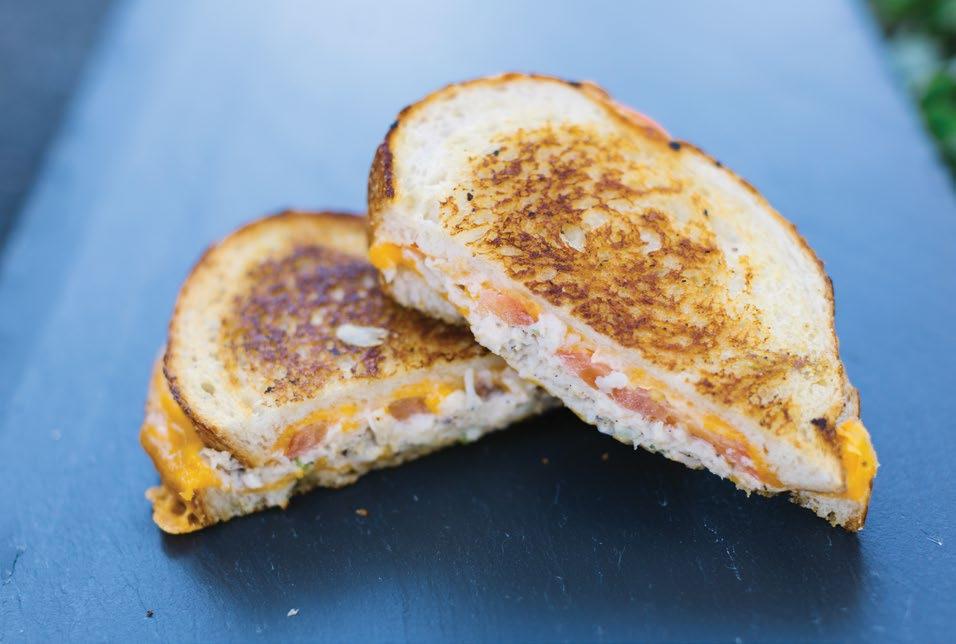
Place 2 slices of tomatoes directly on the pan and grill for a few seconds on each side. Place the tomatoes on the other slice of bread and toast for 3 minutes. Flip the slice of bread with the tomatoes onto the other slice of bread with the crab mix. Press down firmly and toast both sides for 2 to 3 minutes, until golden brown and crispy.
behindthefoodcarts.com
info@behindthefoodcarts.com
social media: behindthefoodcarts
 *From Food Truck Road Trip: A Cookbook by Kim Pham, Philip Shen, Terri Phillips, printed with permission of Page St. Publishing
twitter: mmhtruck
*From Food Truck Road Trip: A Cookbook by Kim Pham, Philip Shen, Terri Phillips, printed with permission of Page St. Publishing
twitter: mmhtruck
Big Dog Vineyards
Just eighteen years ago Mark and Sandy Capalongan would never have guessed they’d be making award-winning wine. Now they can’t imagine life without their home on a vineyard and the family they’ve found in this industry.
 Interview and Photography by Isara Krieger
Interview and Photography by Isara Krieger
38
winemakers Mark and Sandy Capalongan
As you climb the Southern tip of the rolling East Bay Hills, San Jose at your back, it’s easy to forget that you’ve left the corporate interiors of Silicon Valley a mere three miles behind.
Mark and Sandy Capalongan make this drive daily, when they leave their engineering identities at their day jobs and return home as winemakers to their vineyard on a hill. Big Dog Vineyards is a modestly sized property whose vine leaves extend out over an anything-but-modest view of the entire Bay Area. On a clear day, the naked eye can make out everything between Silicon Valley and the Transamerica Building in San Francisco.
Before the Vineyard’s conception eighteen years ago, the husband-wife duo was looking for little more than a reprieve from the Homeowner’s Association of the San Jose suburb in which they shared a small residence.
“When my wife and I were looking for a place to move, this plot of land went up for sale,” Mark begins on the ascent to that very plot. “Our friend Brian said, ‘Hey, you should buy the land, buy some vines, and grow wine. It’ll cost you the same as a new car.” He laughs, “Well by the time we had looked into everything we would need, the new car was going to be a Lamborghini.”
Mark and Sandy didn’t shy away from the challenge. Now, almost twenty years later, they’ve turned rocky soil that “wouldn’t grow anything besides grapes” into an award-winning vineyard—the only vineyard in the Milpitas area.
Being the sole vineyard for miles has meant some unexpected difficulties— mainly in keeping away from their grapes birds, deer, pigs, and an estimated 4,400 ground squirrels per year—but it has offered unique rewards as well. As he points to the vines, Mark explains, “We have a total of five acres planted, so that’s about 4,000 vines, and six hundred cases a year. It’s definitely family sized.” Despite their smaller level of production, Big Dog Vineyards has acquired a large local following that provides Mark and Sandy plenty of the kind of fame and popularity that larger wineries in Napa and Sonoma have to work for. When over 200 guests began to attend the tastings Mark and Sandy had thought to offer once a month, the duo decided to open their doors to the public every weekend. They also host live bands, corporate events, and even a few weddings.
Remaining involved in the hightech world has equipped Mark with an interesting perspective. From the Vineyard’s sunny patio, he confesses, “I [still work as an engineer]. It’s actually…um…I would rather work here. It’s more fun. It’s more interesting. Spending all that time in the high-tech world, it’s got its own culture and it’s fun in its own way but it’s also very competitive. There are a lot of trade secrets and nobody does anything without a nondisclosure agreement. Nobody reveals anything to you. Everybody gets the feeling they have something marketable and unusual that they can lose if someone else finds out about it.”
“And then you’ve got the wine industry, which is exactly opposite.” Mark’s voice gains excitement as he
continues, “It doesn’t matter where you go, if you’re a winemaker any other winemaker will tell you all his secrets.”
“They’re not even secrets. It’s like everybody‘s on the same team. It’s so cooperative. If we go anywhere else to taste, tasting is usually free. It just seems so friendly, and everybody’s working for the same cause. That’s the biggest difference between high tech and the wine industry. Oh, and high tech makes a lot more money,” he grins.
Money or not, Mark reflects on one last joy of winemaking, “It depends on the year, but there are wines that almost make themselves. You do everything you need to do and everything goes right as expected. It’s like raising a well-behaved child. It’s wonderful.”
Sandy chimes in from across the table. Pointing to her husband, “He’s an engineer,” she exclaims. “And when he’s doing regular engineering stuff in the technical world, he never talks about things with that passion and that,” she pauses, “personalization. Production Ceramics [the focus of their company] is never a thing that has human attributes, unlike the wine…which is his baby.”
Thanks to remaining open to new possibilities, Mark and Sandy have found passion and purpose in a job neither had expected. Let’s be thankful also for their steady temperament, because six hundred cases of even the most well-behaved children sounds like a few too many.
twitter:
bigdogvineyards.com 4545 Felter Rd Milpitas, CA 95035 408.935.9194
bigdogvineyards
facebook:
BigDogVineyards
39
“IT JUST SEEMS SO FRIENDLY, AND EVERYBODY’S WORKING FOR THE SAME CAUSE. THAT’S THE BIGGEST DIFFERENCE BETWEEN HIGH TECH AND THE WINE INDUSTRY.”
SCHURRA’S
A century of fine, handcrafted sweets
Story by Michelle Runde Photography by Stan Olszewski
If life is like a box of chocolates, then head to Schurra’s Fine Confections for some of the best sweets life has to offer. Located on the historic Alameda since 1912, Schurra’s (pronounced sure-ays) is a San Jose confectionary landmark. The family behind this sweet shop were brothers Albert and Justin Schurra. The Schurras started their confectionery business with retail stores in Stockton and Modesto, moving to San Jose when the older brother secured a factory job with Ford in Fremont: one brother made the chocolate, the other made cars. After 30 years they sold the store to a Mr. Smith, who owned it for eight years, until selling it in 1946 to the Viehweger family, who took over for 37 years. Finally, the Viehweger family passed on the recipes and techniques of the Schurra brothers to Bill Mundy, who took over in 1983. Today, Mr. Mundy’s son, Brian, and his wife, Michelle, run the confectionary, upholding the tradition that San Jose has known and loved for generations.
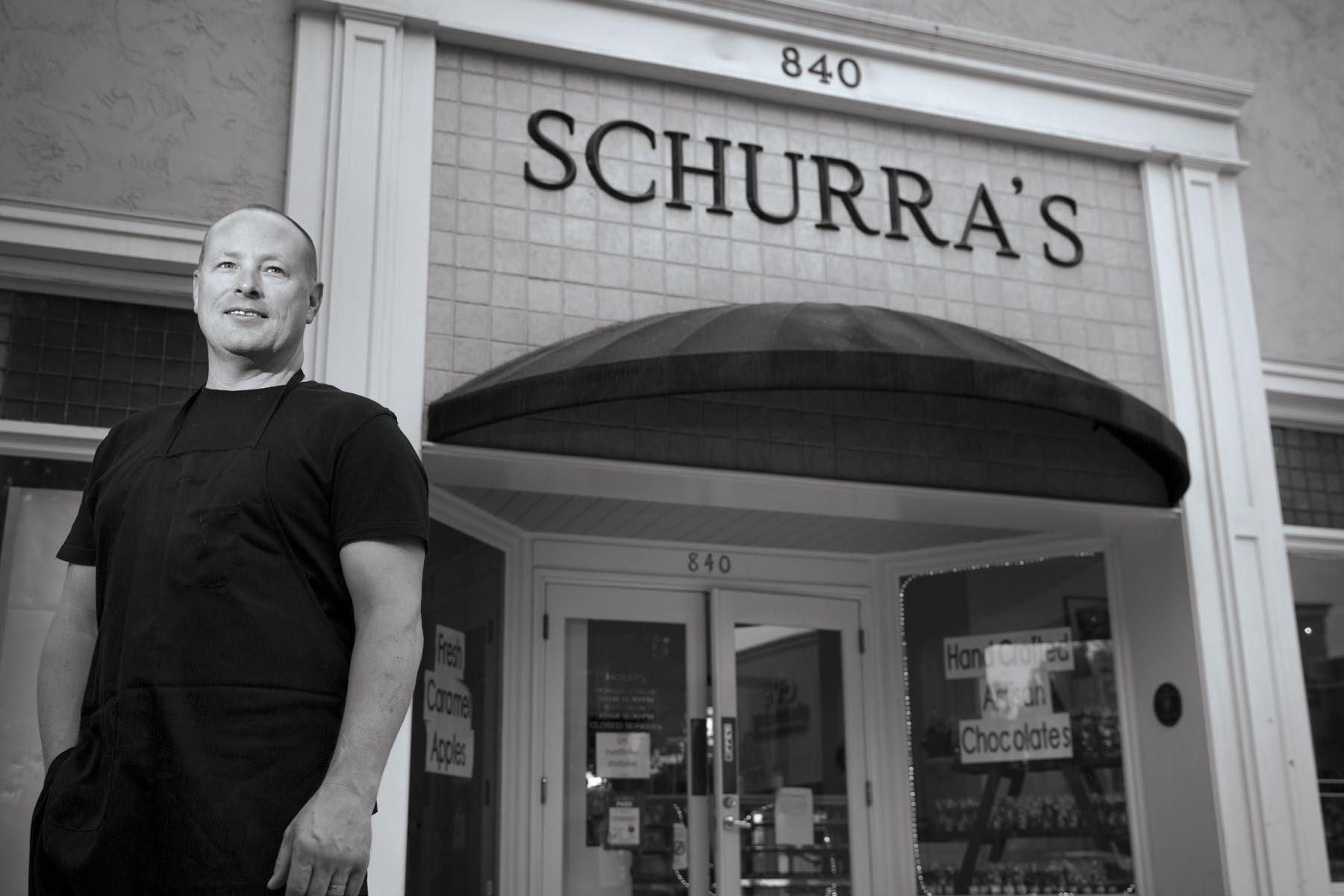
The moment the doors open, customers are greeted with the intoxicating aroma of sugar and chocolate. Almost all chocolates and candies are made in the back of the shop, with the exception of certain gummies that require different equipment. The glass counter in the
front is the first thing to see, a display case of the most tempting chocolate truffles anyone could dream of. The best sellers are the dark chocolate sea salt truffles and the freshly made caramels. “I know it’s popular to ‘source’ your chocolate, but we’ve always just bought locally as much as possible,” says Brian Mundy. Even the dried fruit is from local growers. “We have a long relationship with local growers and producers in California,” Mundy says, “which we continue to this day.”
As the holiday season approaches, Schurra’s gears up for the growing demand of seasonal favorites. The caramel apples, hand-dipped in Schurra’s signature caramel, are an old-fashioned delight. The marshmallows, featured in their best-selling rocky road, are made from scratch. With seven varieties rotated throughout the year, Schurra’s makes an old flavor excitingly new again. Look for molded chocolate pumpkins in the fall, and fresh peppermint bark in the winter. Whether it’s for a holiday gift, a birthday celebration, Valentine’s Day, or just a treat for yourself, Schurra’s upholds the traditions and flavors that are as delectable today as they were one hundred years ago.
40
Brian Mundy
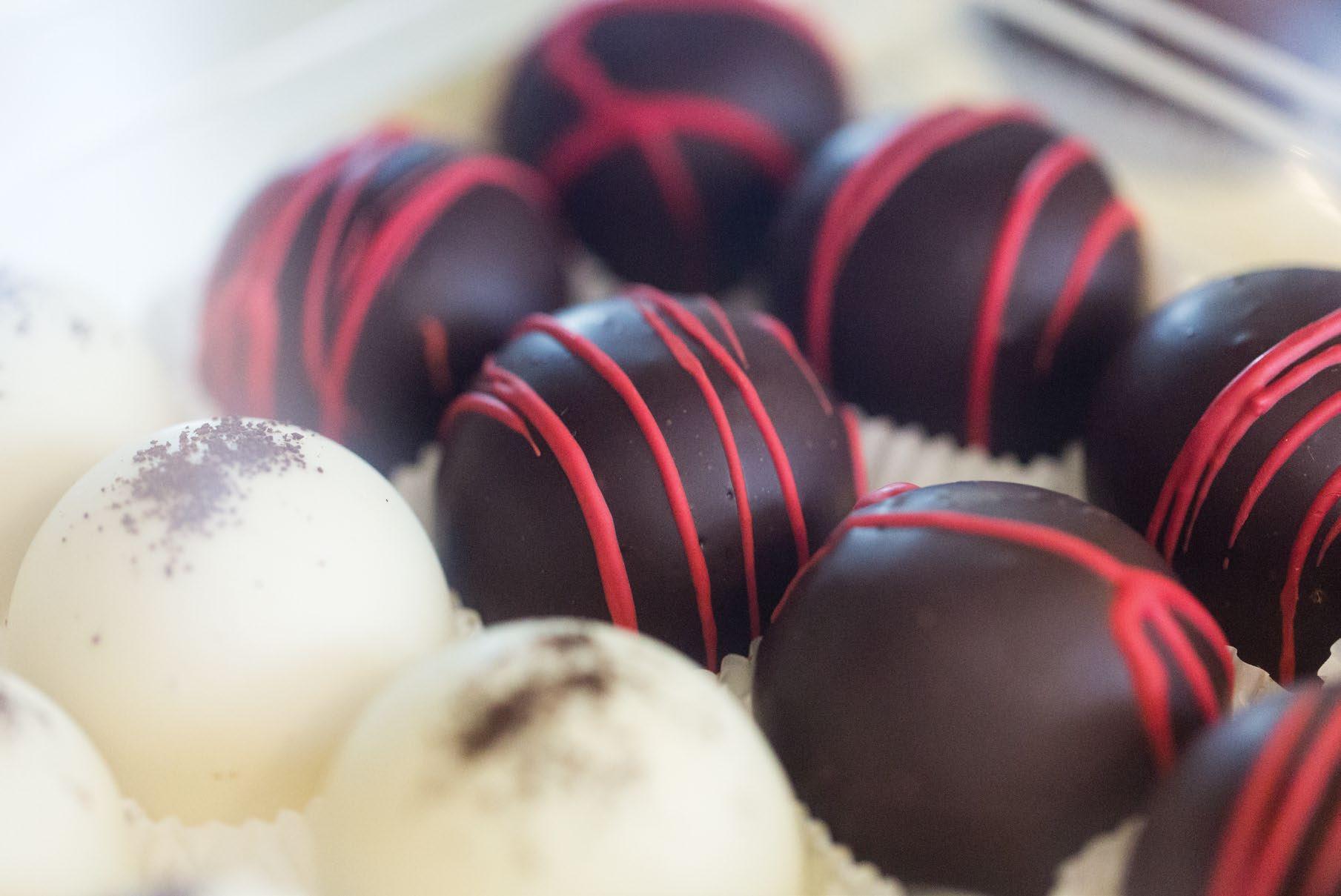

schurrasfineconfections.com 840 The Alameda San Jose, CA 95126 408.289.1562
schurrascandy1912
Schurras_Candy 41
facebook:
twitter:
THE CATS
A Slice of History (with BBQ)
Named for the stately sculpted cats that have stood sentinel at the entrance to an estate known as Poet’s Canyon since 1922, The Cats Restaurant and Tavern boasts a checkered history: it has been a speakeasy, a brothel, a gun store, a biker bar, a realty office, a sporting goods store. Originally a stop on the old stage line—parts of the building have stood since the 1850s—The Cats is one of the last remaining roadhouses in the United States.
Reestablished as a restaurant and tavern in 1967, The Cats closed for a time in 2008. When current owners Mark Edwards and David Peterson renovated in 2011, they re-piped, re-wired, and retrofitted the building, filling it with the artifacts and decor of old saloons. Their goal was to reclaim as much of the place’s original ambience as possible. For the menu, they went with classic slow-smoked barbecue, some of the best barbecue you can find west of the Mississippi. In fact, it hails directly from Kansas City, via award-winning chef Paul Kirk, who has trained and certified both the owners and the restaurant’s chefs.
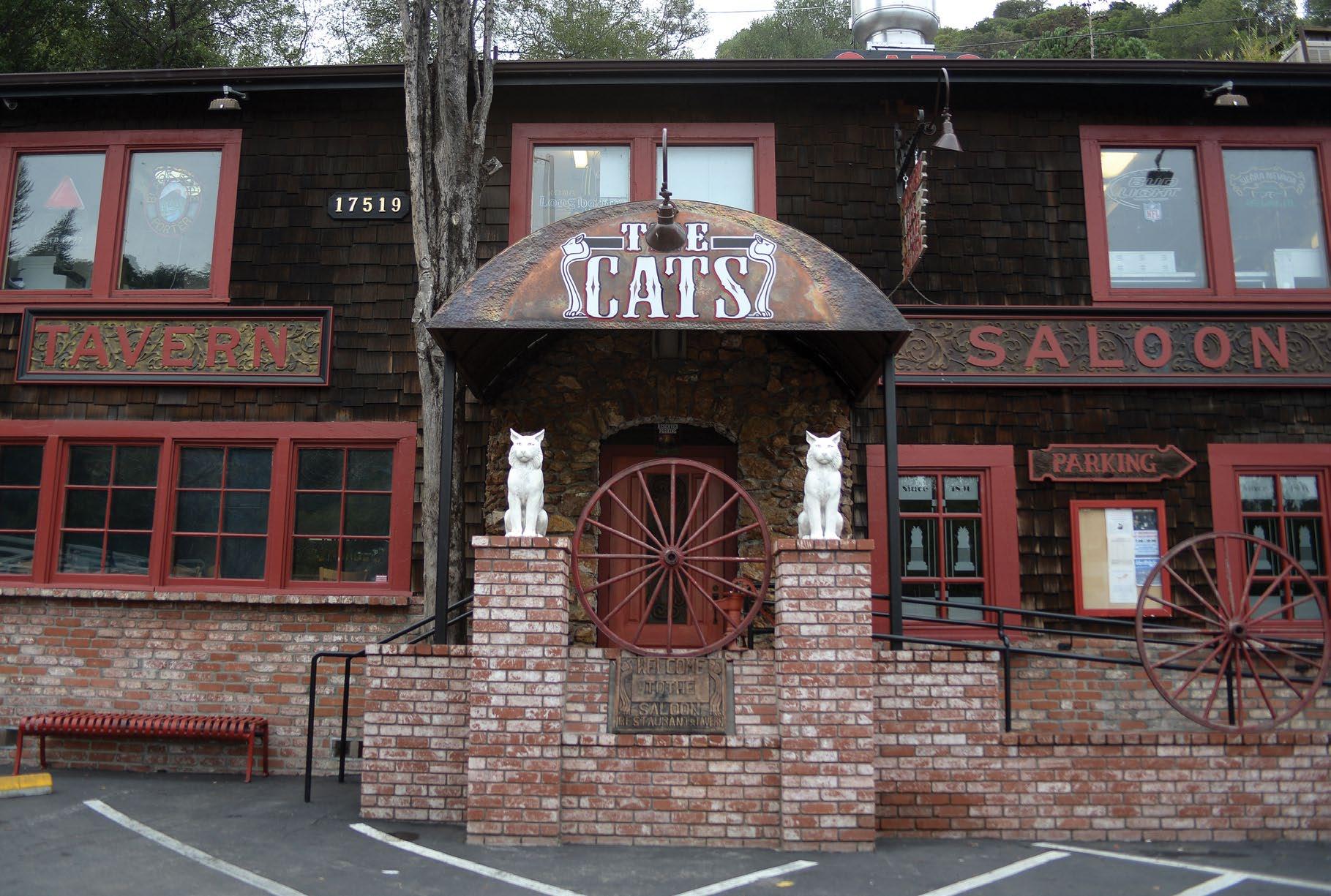
There’s the hickory slow-pit smoked barbecue. Pulled pork, smoked chicken, St. Louis-style ribs. And then
there’s the oak-wood grilled brick barbecue. Prime pork chop, top sirloin, New York steak, grilled salmon, seasonal veggies. To this, you can add a “lil’ something on the side.” Cowboy chips, chicken gumbo, a fully loaded potato, braised greens. For dessert, you might consider the crème bruleé. Or the black magic cake, topped with vanilla gelato.
Somewhat unusually for a barbecue place, The Cats has made accommodating modern diets a priority. One of the restaurant’s managers, Clay Brasuel, has had to live with dietary restrictions for most of his adult life and understands firsthand the need to be mindful of allergens. “I love this kind of food, and we wanted to make sure The Cats was the kind of place where people concerned about ingredients could confidently eat. When is the last time you heard the term ‘gluten-free’ in a barbecue restaurant?”
Despite the move towards a more health-conscious crowd, The Cats hasn’t lost its claws. Live bands and a good old-fashioned bar are mainstays. Comedy nights, a DJ night, and a host of other special events are being added to the calendar. At The Cats, you can find a spot of nightlife served up with that slow-smoked barbecue.
42
Story and Photography by Lam Nguyen
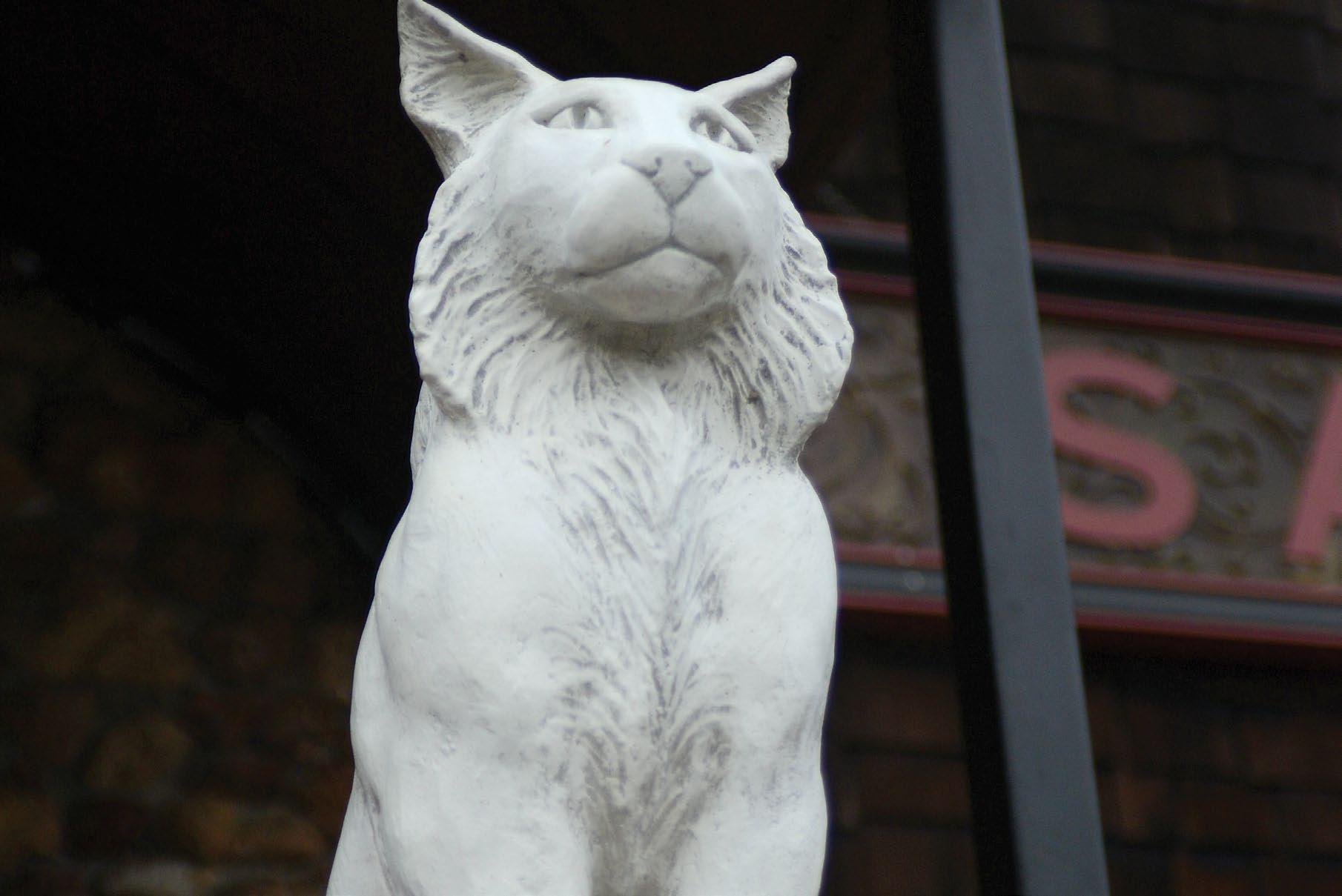
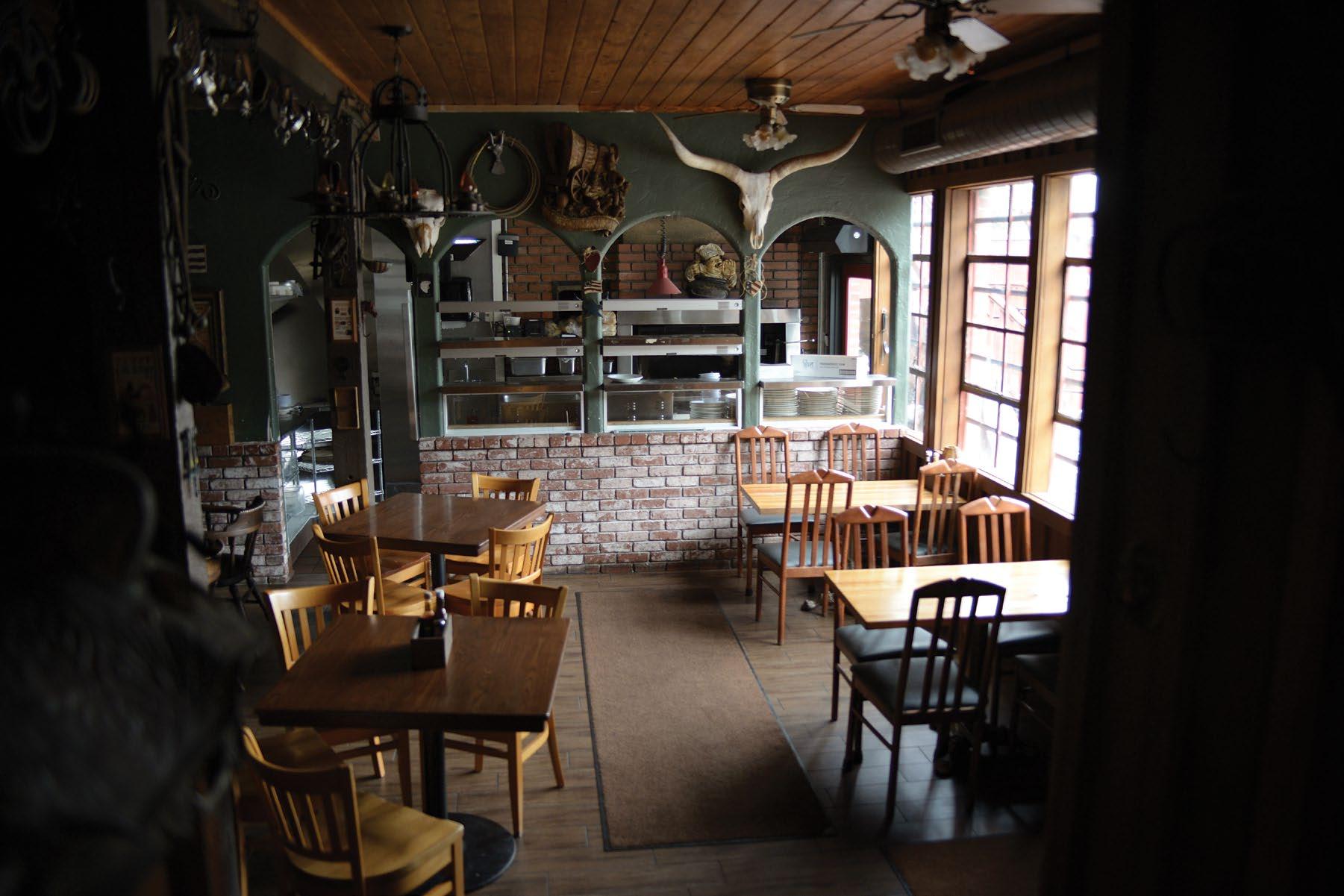
thecatsrestaurantandtavern.com 17533 Santa Cruz Hwy Los Gatos, CA 95033 408.354.4020 facebook: TheCatsRestaurant twitter: TheCatsCA 43
CHEF DAVID KINCH
A Pure Taste and a Sense of Place
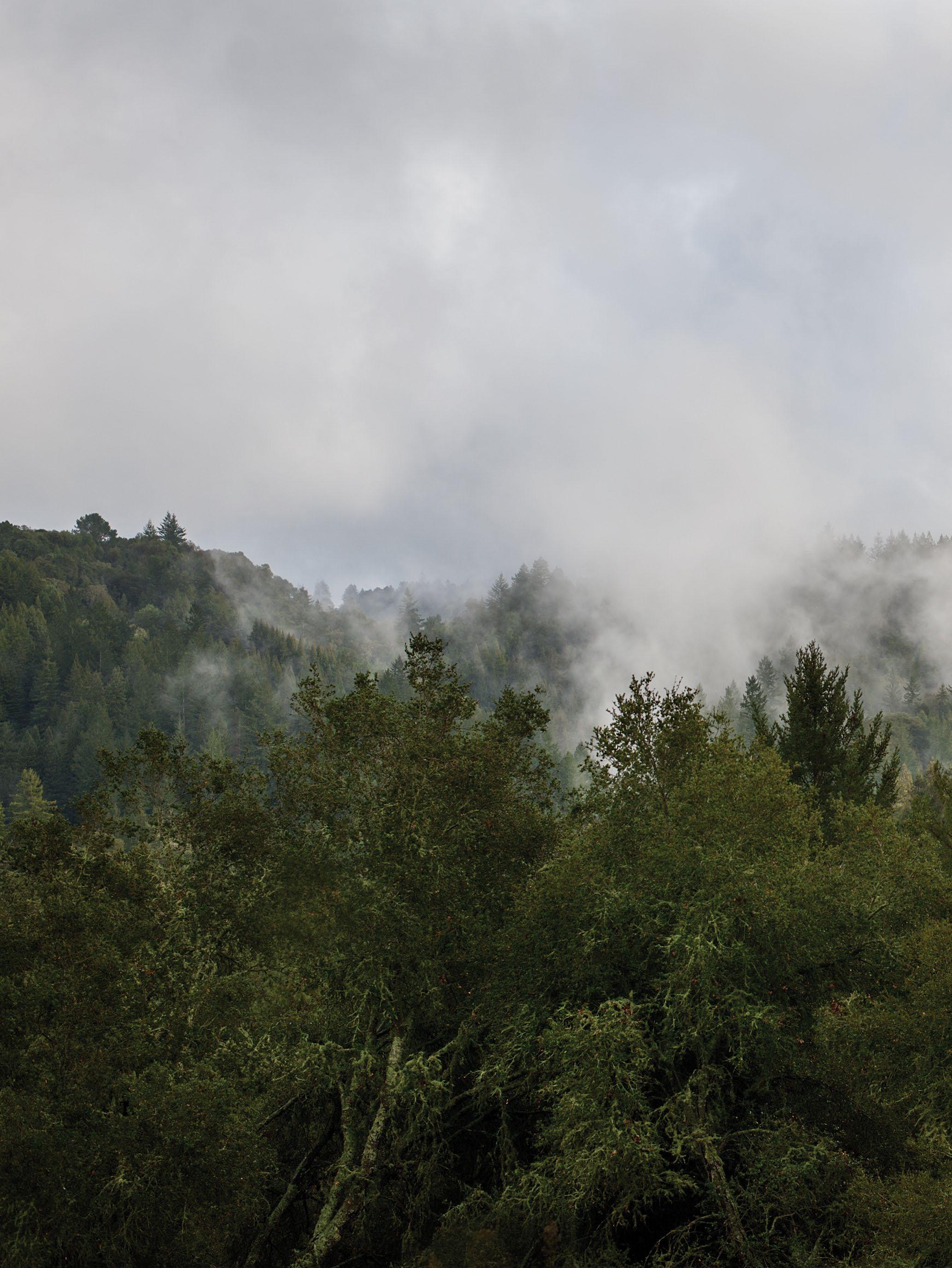
growbetterveggies.com
Shot on location at Love Apple Farms:
David Kinch is a 2009 Iron Chef Champion (dethroning Food Network star Bobby Flay), 2010 winner of the Best Chef in America award for the Pacific region from the James Beard Foundation, and GQ’s Chef of the Year for 2011. His Los Gatos restaurant, Manresa, has been named one of America’s Top 50 Restaurants by Gourmet, one of the World’s 50 Best Restaurants by Restaurant Magazine, and has been awarded two Michelin stars for eight years running.
 Story by Leah Ammon Photography by Daniel Garcia
Story by Leah Ammon Photography by Daniel Garcia
When he was growing up, David Kinch and his two brothers were raised on his mother’s Pennsylvania Dutch cooking. “We ate well,” Kinch recalls, “but we ate simply.” His father, an engineer for the oil industry, was transferred frequently from city to city in the South, working on various refineries. The family bounced around with him. Ultimately, they settled down in New Orleans. Kinch was 16 at time.
Taking jobs at various restaurants as a teen, Kinch was fascinated by what he would later call the “pirate-like” nature of the chefs in the kitchens where he worked. He clarifies, “What I mean by ‘pirate-like’ is not so much coarseness or roughness, but more of a tribal aspect. They were a group unto themselves and they looked out for themselves.”
Kinch chose to attend culinary school at Johnson & Wales University in Providence, Rhode Island and graduated in 1981. His goals were clear: “I knew I wanted to be a chef, and to have my own restaurant. Pretty much everything was geared toward that main intention.”
Through the course of his education, he had the opportunity to travel abroad. He became enamored of haute cuisine, and was especially impressed by one commonality between the restaurants he liked best: “What I found fascinating was the extent to which [those places] were true reflections of where they were located. It left a big impression on me. And that was what I wanted to do: to create a restaurant here in America, as an American cook, to convey that same unique feeling and experience.”
After graduation and stints working at restaurants in France, Germany, Spain, and New York, an opportunity presented itself to cook in Fukuoka, Japan, further refining Kinch’s palate and shaping his preferences for purity of flavor. But when he concluded his time in Japan, Kinch did not head back to the East Coast. Instead, he settled down in San Francisco.
Initially drawn by the mild weather and the fact that his family had relocated to the area, what made Kinch stay was a sense of excitement about the culinary scene in the Bay Area. “I had done my time in New York,” he says, “and you had this nascent, unique cuisine—a California
cuisine—that was just starting to emerge. You had talented individuals, proximity to the wine country, and access to a sophisticated, well-traveled local customer base. It seemed like a great time to plant roots and to start to make a contribution.”
After spending some time cooking in San Francisco, Kinch ended up in the South Bay. In 1994, he opened Sent Sovi in Saratoga. And in 2002, he left Sent Sovi to open Manresa in Los Gatos.
His abiding aim at Manresa is to craft an experience that faithfully embodies the terroir—or the singular spirit— of the California Coast. “We ask ourselves one question in everything we do, whether it’s a dish or an aspect of service,” says Kinch. “‘Is what we’re doing a reflection not only of who we are, but where we are?’ I don’t want Manresa to be a restaurant you could pick up and drop off in Tokyo or Barcelona or Copenhagen. We are trying to be an expression of our locale.”
Kinch’s famous decision to source his fruit and vegetables exclusively from Santa Cruz’s biodynamic Love Apple Farms adds to this hyper-local aspect of his cuisine. This was a choice, he says, based on quality, not locovorism for locovorism’s sake. “If the produce weren’t of the highest quality, we wouldn’t use it,” he says. “You know, we’re not magicians. We cannot change the laws of physics and make something taste great when starting with something that’s only mediocre.”
Kinch finds inspiration for his dishes in a variety of places. “I get inspiration from reading a book—not necessarily a cookbook—or just by walking around the farm. You have all these sights, sounds, aromas, and tastes. Just picking something off the vine and having a simple taste of the barest product is where the true inspiration comes from. And then the recipes tend, through trial and error, to come together.”
Further inspiration is found in the collaborative environment of the Manresa kitchen. Kinch says that he and his team “talk, we bounce ideas off each other, and things slowly come together, sometimes in a day or two, sometimes over weeks as we tweak and fine-tune.” But what the team seeks, in all things, is simplicity. “We tend to
46

47




“WE ARE TRYING TO BE AN EXPRESSION OF OUR LOCALE.”

take things off the plate instead of adding things on. We don’t want things to be unnecessarily complicated; we want things to be the best possible example of what they can be,” Kinch says.
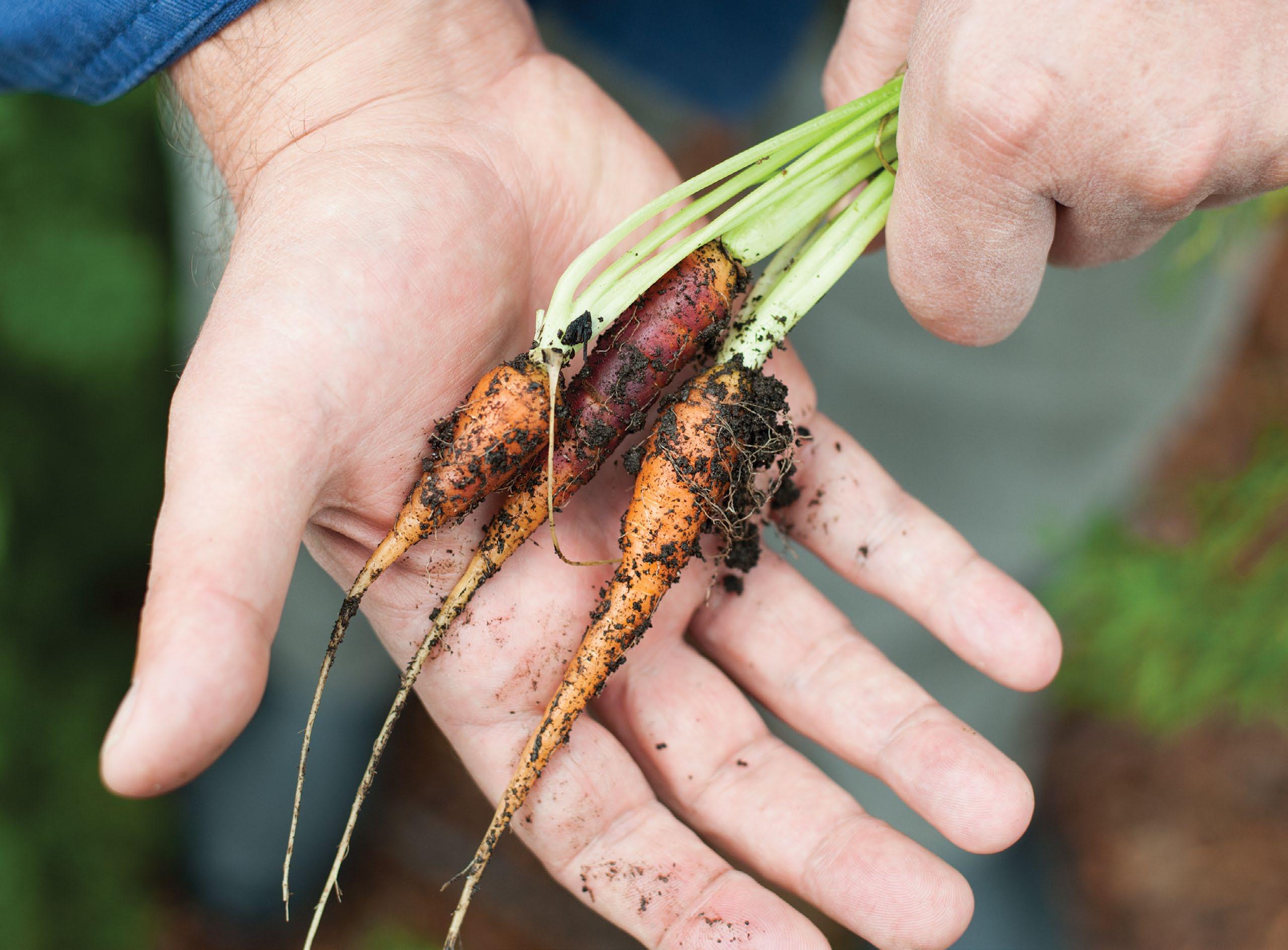
Los Gatos may feel a bit off the beaten path—certainly, it is not New York, Los Angeles, or even San Francisco— but according to Kinch, therein lies its appeal. “A lot of the restaurants that made the biggest impression on me were places in small towns. They were truly destination restaurants. Manresa is modeled after that tradition. We know that people are traveling from great distances— from all over the state, all over the country, sometimes internationally—to eat at the restaurant. We know they’re making a great effort to get here, and it makes us work that much harder.”
Currently, Manresa is closed in the wake of a two-alarm fire that destroyed it back in July. However, Kinch says, the restaurant is on track to reopen in early 2015. Last month, Kinch made the official announcement that a brick and mortar bakery, Manresa Bread, will be open by mid-December in downtown Los Gatos.
The future looks rosy for Kinch personally. He is equally enthusiastic about the future of cuisine in this country more generally.
“We’re in a golden age of dining culture in the United States,” says Kinch. “Restaurants have grown more ambitious, and the public has grown more sophisticated. Twenty-five years ago, there was only one kind of fine dining, and it was French. But we’re now learning to celebrate our local and regions, whether that’s New England, the Midwest, or the Southwest. We have a wealth of food traditions, a generation of talented chefs starting to explore them, and a dining public that’s willing to support them.”
It is dealing with that dining public that Kinch finds most gratifying. “When I fell into cooking, I liked that it was a craft, something I could do working with my hands. I found it therapeutic, and it made me happy when I did it,” Kinch says. “But what gave me immense satisfaction was making other people happy, doing a job that I loved. That is,” he concludes, “easily the most rewarding thing about what I do, even to this day.”
manresarestaurant.com
facebook: ManresaRestaurant
twitter: davidkinch & ManresaCA
51
WINTER KNITS

PHOTOGRAPHER - Daniel Garcia
MODEL - Angelique Broussard, JE Model Management
HAIR - James Griffiths for Salon Blu
HAIR - Kory Nguyen for Brazilian Blowout Bar
MAKE UP - Gabriella Nuñez, Salon Blu
PRODUCER/STYLIST - Kristen Pfund
LOCATION - Studio FCC
Poncho - Simonetta, Black Cat Hats Los Gatos $58
Pants - Citizens of Humanity, Rouge Los Gatos $245
Black Scarf - Look, Prim Los Gatos $24.50
Grey Scarf - BP, Nordstrom Valley Fair $24
Shoes - Saint & Libertine, Kash Santana Row $310
Throw - Ugg Home, Nordstrom Valley Fair $295

 Poncho - Simonetta, Black Cat Hats, Los Gatos $58 Pants - Citizens of Humanity, Rouge, Los Gatos $245 Black Scarf - Look, Prim, Los Gatos $24.50 Grey Scarf - BP, Nordstrom Valley Fair $24
Poncho - Simonetta, Black Cat Hats, Los Gatos $58 Pants - Citizens of Humanity, Rouge, Los Gatos $245 Black Scarf - Look, Prim, Los Gatos $24.50 Grey Scarf - BP, Nordstrom Valley Fair $24
Grey Sweater - Lotus, Los Gatos $88

Neon Sweater - Leith, Nordstrom Valley Fair $68
Skirt - rag & bone, Nordstrom Valley Fair $325
Shoes - Schutz, Kash Santana Row $240
Scarf - BP, Nordstrom Valley Fair $24
Hat - KB Knit Bonbons, Black Cat Hats, Los Gatos $26
Rock Ring - Lotus, Los Gatos $52
Coil Ring - Lotus, Los Gatos $36
Umbrella - Muji, DTSJ $15.95
 Sweater - 3.1 Phillip Lim, Nordstrom Valley Fair $475.00
Wrap - Ugg Home, Nordstrom Valley Fair $295
Shoes - Donald J. Pliner, Santana Row $268
Coil Ring - Lotus, Los Gatos $36
Midi Ring - Lotus, Los Gatos $32
Thumb Ring - Lotus, Los Gatos $36
Sweater - 3.1 Phillip Lim, Nordstrom Valley Fair $475.00
Wrap - Ugg Home, Nordstrom Valley Fair $295
Shoes - Donald J. Pliner, Santana Row $268
Coil Ring - Lotus, Los Gatos $36
Midi Ring - Lotus, Los Gatos $32
Thumb Ring - Lotus, Los Gatos $36
 Sweater - Marc by Marc Jacobs, Nordstrom, $368 Pants - Alexander Wang, Nordstrom, $275
Shoes - Donald J. Pliner, Santana Row $198
Thumb Ring - Lotus, Los Gatos $36
3-Finger Ring - Kash, Santana Row $25
Sweater - Marc by Marc Jacobs, Nordstrom, $368 Pants - Alexander Wang, Nordstrom, $275
Shoes - Donald J. Pliner, Santana Row $198
Thumb Ring - Lotus, Los Gatos $36
3-Finger Ring - Kash, Santana Row $25
 Sweater - Dries Van Noten, Nordstrom VF $1,350 Skirt - Lotus, Los Gatos $68 Boots - Schutz, Kash Santana Row $320 Ring - Lotus, Los Gatos $42
Sweater - Dries Van Noten, Nordstrom VF $1,350 Skirt - Lotus, Los Gatos $68 Boots - Schutz, Kash Santana Row $320 Ring - Lotus, Los Gatos $42
Sweater Dress - Muji $89.95

Sweater - Joa, Nordstrom, Valley Fair $62
Infinity Scarves - BP, Nordstrom, Valley Fair $24
Headband - Prim, Los Gatos $18.50
Boots - Saint & Libertine, Kash, Santana Row $350
alone. together.
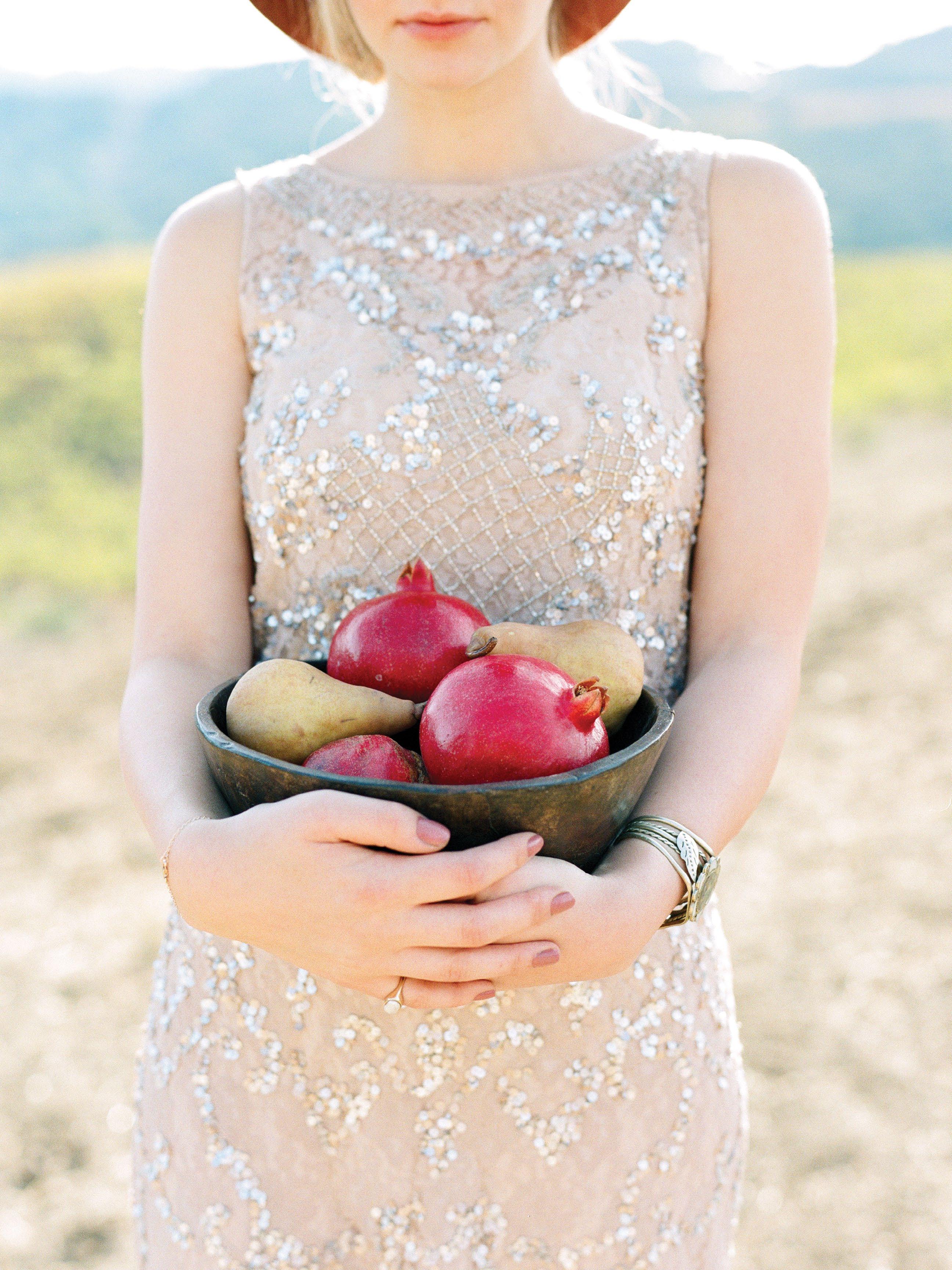 Photography by Tanja Lippert
Photography by Tanja Lippert
 Photographer - Tanja Lippert
Photo Assistant - Kayleigh Sullivan
Models - Kayla, JE Model Management
Joe, Scout Model Management
Hair & Make-up - Tanja Lippert
Stylist - Allison Salas
Picnic set styling by Asiel Design and Tulio Flores
Producer - Kristen Pfund
Location - Cooper Garrod Estate Vineyard
Photographer - Tanja Lippert
Photo Assistant - Kayleigh Sullivan
Models - Kayla, JE Model Management
Joe, Scout Model Management
Hair & Make-up - Tanja Lippert
Stylist - Allison Salas
Picnic set styling by Asiel Design and Tulio Flores
Producer - Kristen Pfund
Location - Cooper Garrod Estate Vineyard
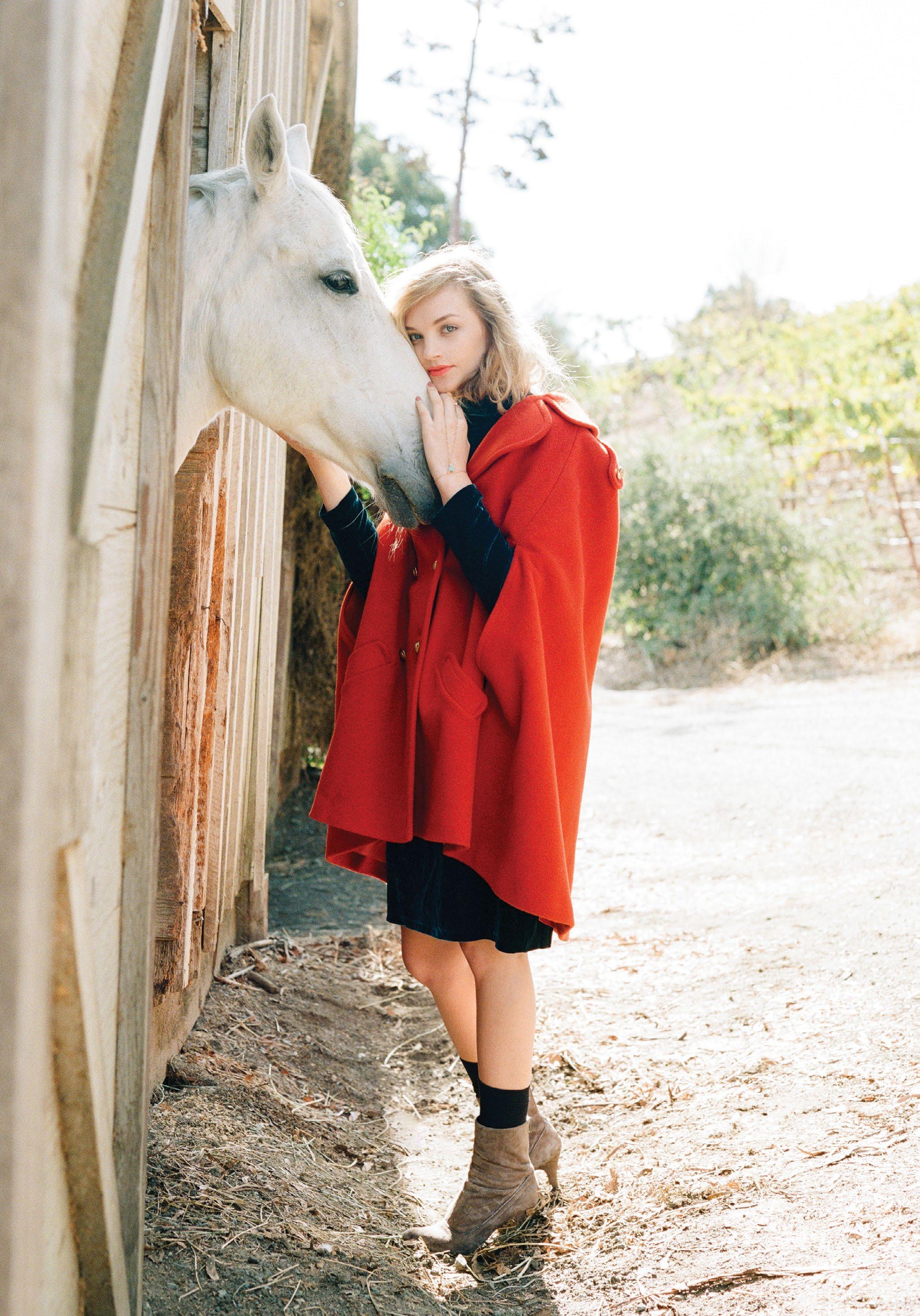

62
Kayla: Cape - vintage, Black & Brown $45; Dress - vintage, Black & Brown $16; Bracelet - Prim Los Gatos
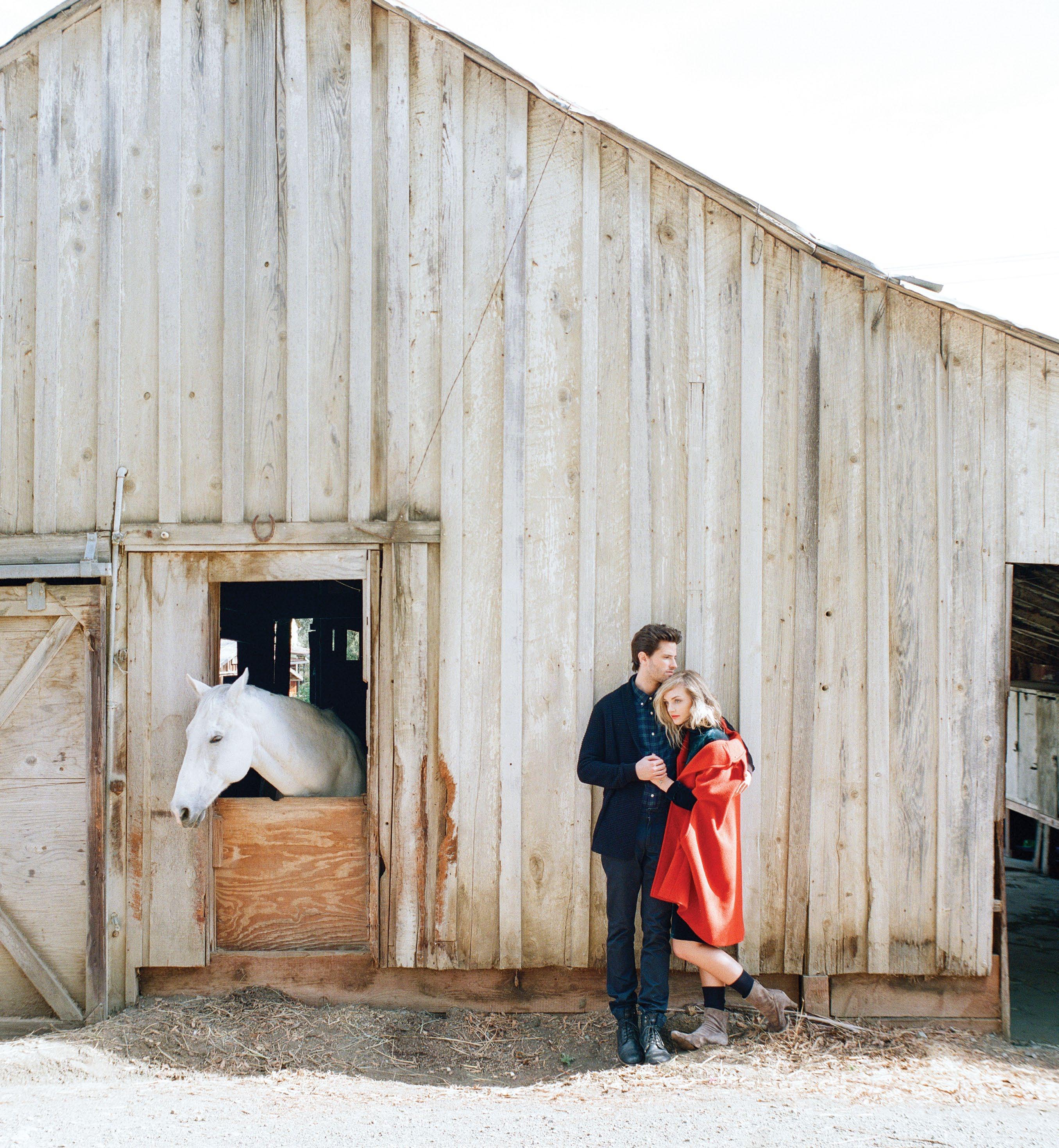
63
Joe: Pants - Muji $59.95; Sweater - Topman, Nordstrom Valley Fair $75; Shirt - Muji $39.95
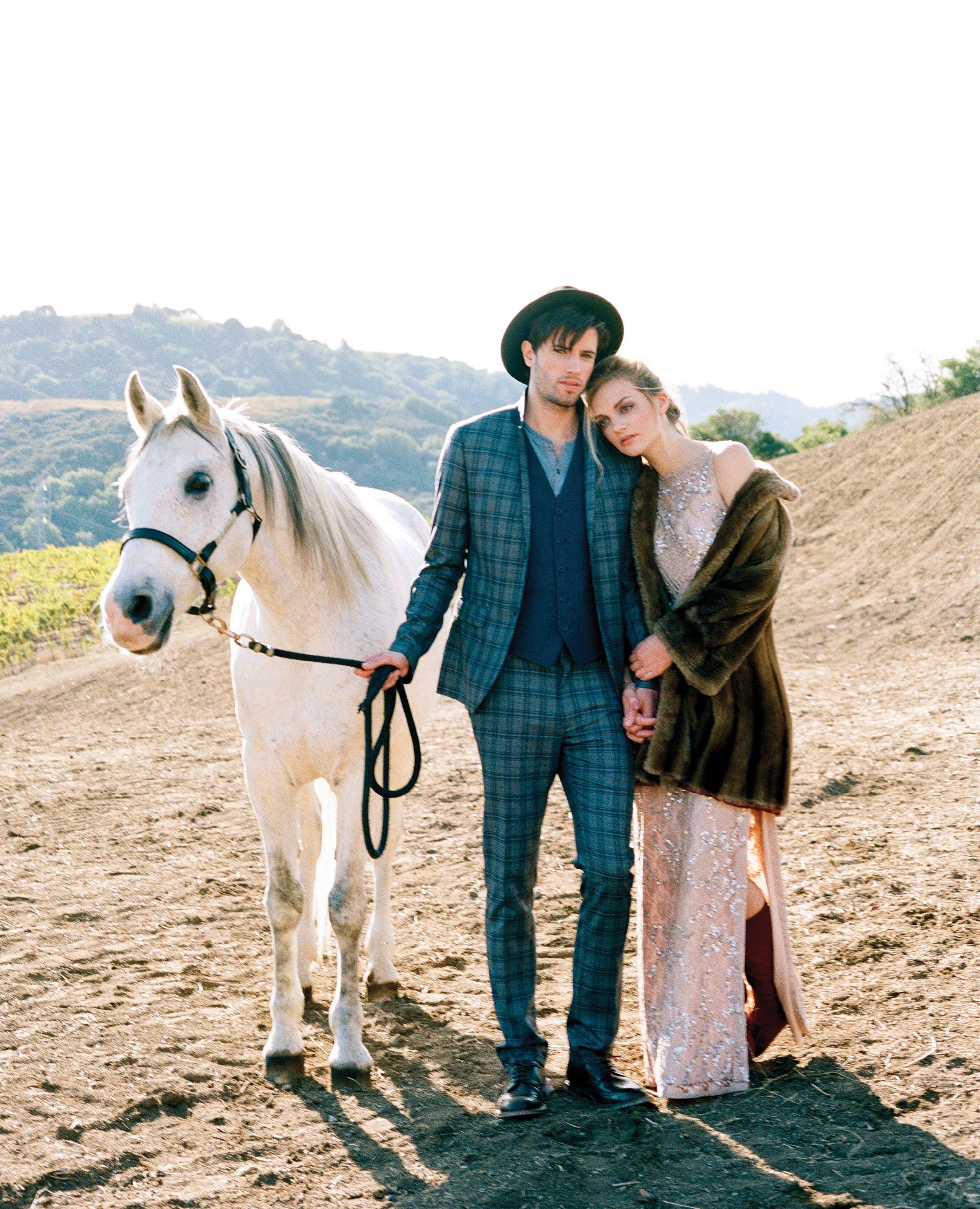 Kayla: Dress - Aiden Mattox, Nordstrom Valley Fair $495; Coat - Moon Zooom
Kayla: Dress - Aiden Mattox, Nordstrom Valley Fair $495; Coat - Moon Zooom
64
Joe: 3-Piece Suit - Topman, Nordstrom Valley Fair, Jacket $300, Pants $128, Vest $75; Shoes - Donald J. Pliner, Santana Row $425

Bralette-

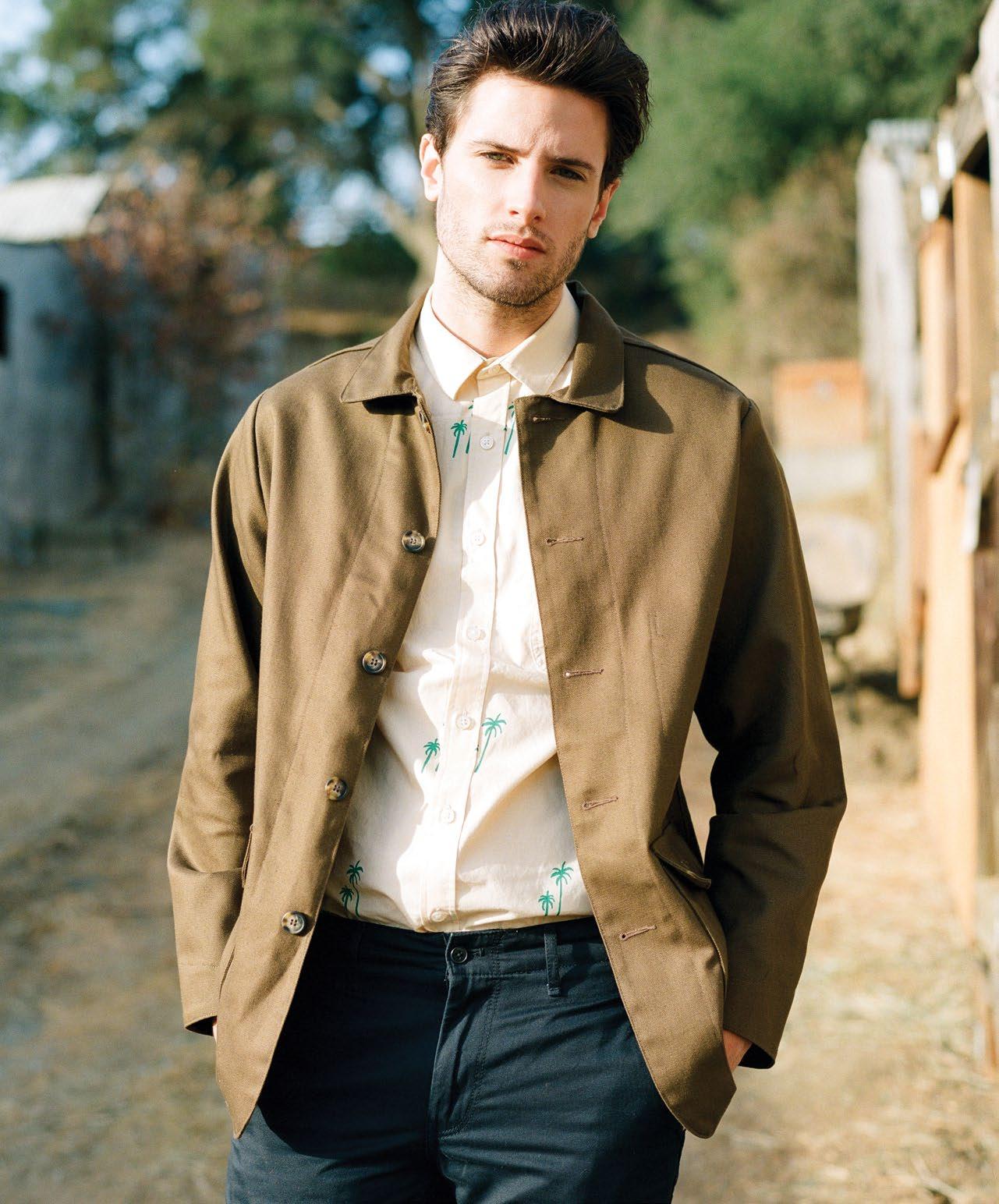
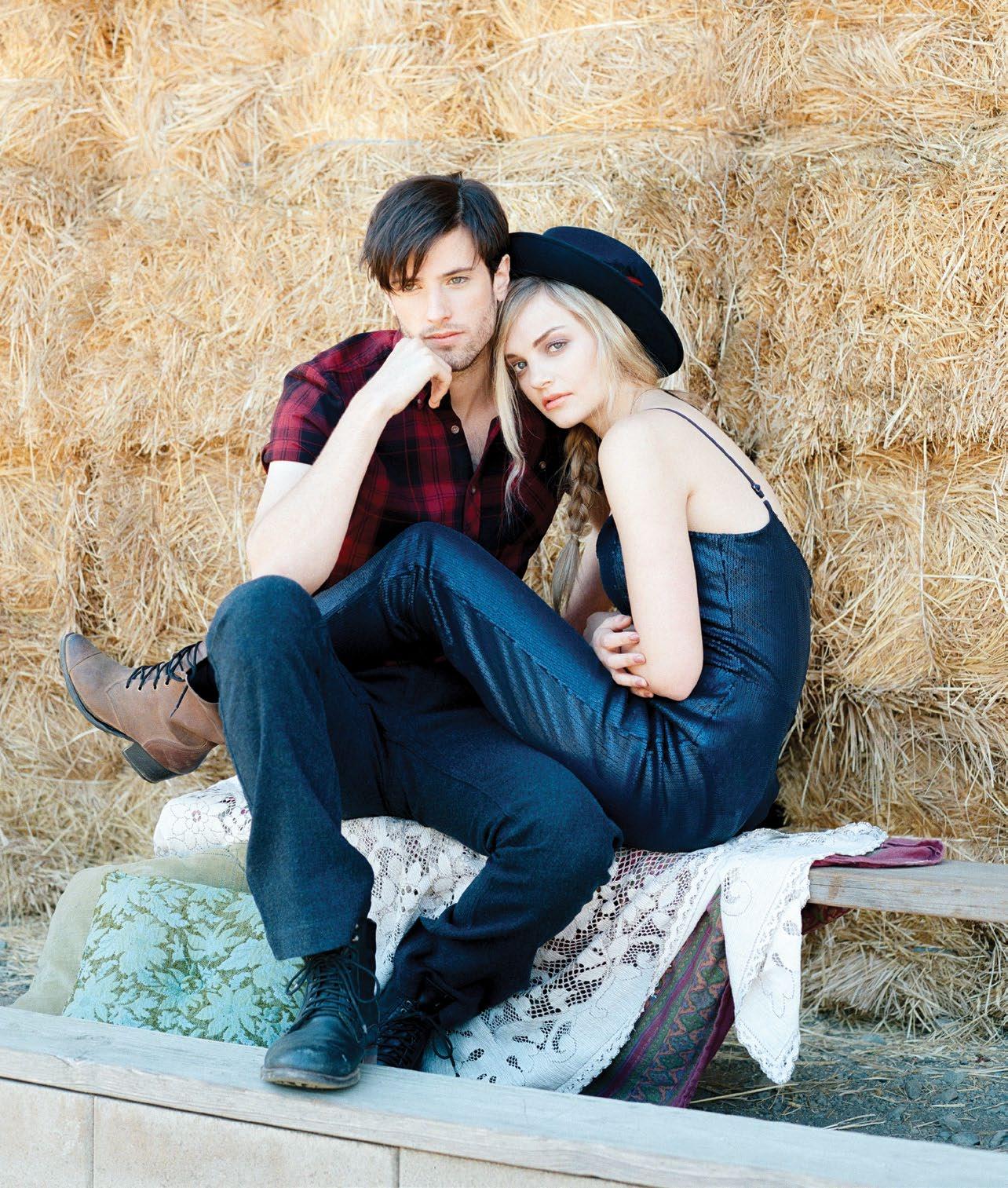
 Top_ Kayla: Shirt - Chelsea28, $98; Bralette - Topshop, $40; Skirt - Astr, $78 All available at Nordstrom Valley Fair Joe: Sweater - Wallin & Bros, Nordstrom Valley Fair $98; Pants - Muji $89.95 Hat - Black Cat Hats, Los Gatos
Bottom_ Joe:: Shirt - Topman $50; Pants - Muji $59.95
Coat - First Article, Container Pop Up San Jose
Top_ Kayla: Jumpsuit - Rules of Etiquette, Nordstrom Valley Fair $78 Necklaces - Prim, Los Gatos; Hat - Black Cat Hats, Los Gatos $88
Joe: Shirt - Topman, Nordstrom Valley Fair $55; Pants - Muji $89.95
Bottom_ Kayla: Coat - Muji $199.95; Blouse - Black & Brown $32
Topshop, Nordstrom Valley Fair $40; Skirt -Kiss & Make-up, Los Gatos
Top_ Kayla: Shirt - Chelsea28, $98; Bralette - Topshop, $40; Skirt - Astr, $78 All available at Nordstrom Valley Fair Joe: Sweater - Wallin & Bros, Nordstrom Valley Fair $98; Pants - Muji $89.95 Hat - Black Cat Hats, Los Gatos
Bottom_ Joe:: Shirt - Topman $50; Pants - Muji $59.95
Coat - First Article, Container Pop Up San Jose
Top_ Kayla: Jumpsuit - Rules of Etiquette, Nordstrom Valley Fair $78 Necklaces - Prim, Los Gatos; Hat - Black Cat Hats, Los Gatos $88
Joe: Shirt - Topman, Nordstrom Valley Fair $55; Pants - Muji $89.95
Bottom_ Kayla: Coat - Muji $199.95; Blouse - Black & Brown $32
Topshop, Nordstrom Valley Fair $40; Skirt -Kiss & Make-up, Los Gatos
66
Hat - Vintage, Black & Brown; Bracelet- LLK Design, Prim Los Gatos

67
Kayla: Pink Crop - Topshop, Nordstrom Valley Fair $40; Skirt - Bailey 44, Nordstrom Valley Fair $174; Quilted Jacket - Muji $59.95; Bracelet - LLK Designs, Prim Los Gatos Joe: Sweater - Muji $59.95; Pants - Muji $59.95
BOSSA NOVA, SAMBA & WORLD MUSIC COMPOSER
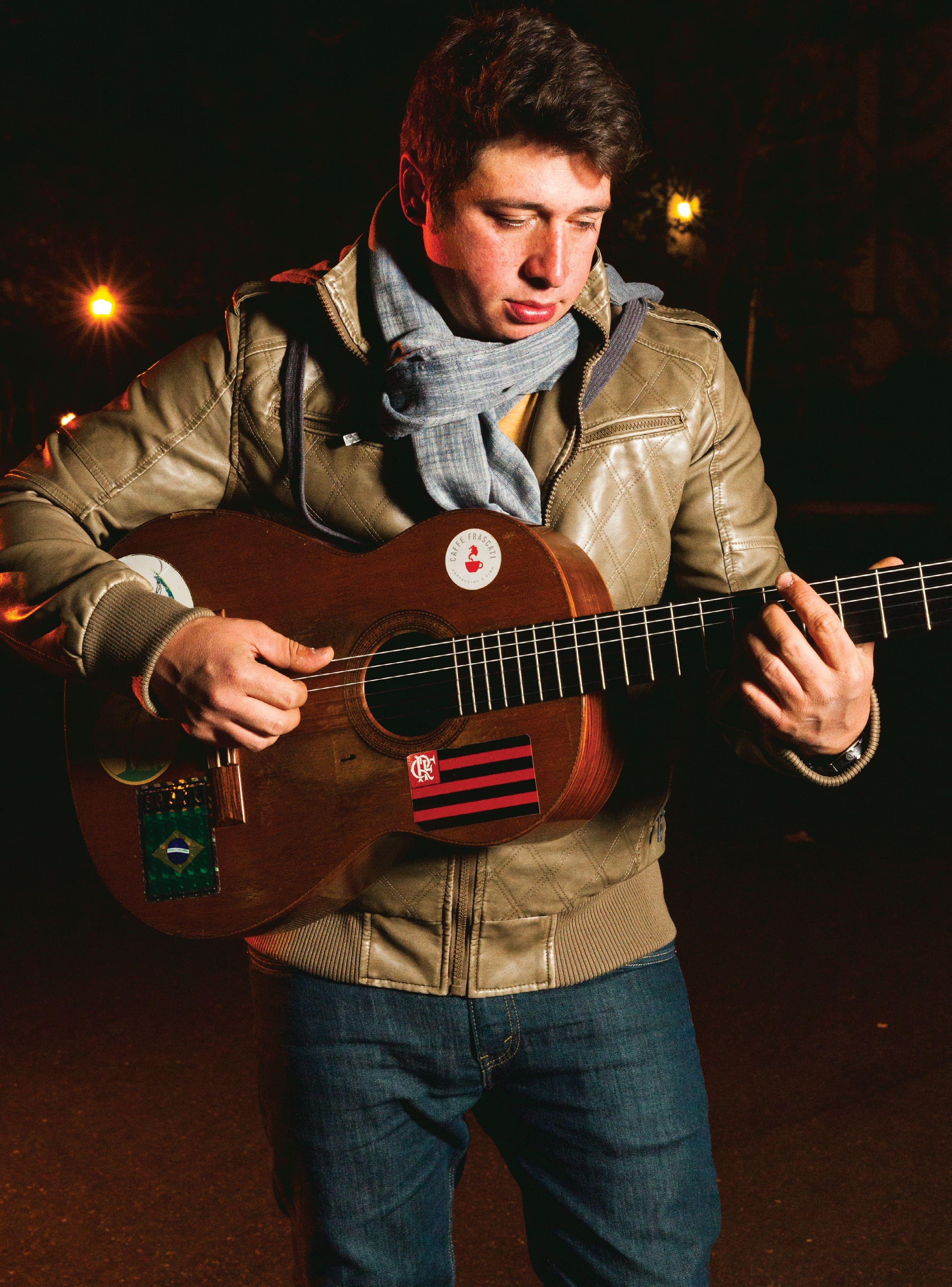
The Brazilian Rhythms of
Cado is a man of many faces: a gifted musician with several albums to his name, a singersongwriter in three languages, a heavy laborer, a deep-thinker. A conversation with Cado touches on many topics. He speaks of his love of travel, the struggles of growing up as an immigrant, his disillusion with the tarnished American dream, the frustrations of modern day Silicon Valley life.
And then, he transforms. Gently picking up a guitar and squeezing his cigarette in between strings and guitar handle, he begins to play. One moment, he is just another patron at a coffee shop on San Jose’s bustling 1st Street. The next, he is a bossa nova, samba, world-music composer and performer. People begin drifting in off the street and from neighboring businesses, taking seats at his table, drawn by his hypnotic rhythms, his introspective lyrics, his smooth honeyed voice, the dreamy moment lifted out of time he offers passersby.
Moments after finishing a liquid Brazilian ballad, he switches it up. “Take me back to the day of Billie Holiday, take me back to the day of Marvin Gaye,” he sings. His voice is soft, deep. His hands, though calloused and roughened, are graceful and deft, moving fluidly like a piano player’s. His songs linger on love, solitude, loneliness, the dissolution with modern day life. “I want my
music to be a reflection of where I am in life. My approach is organic. You can’t force music, just as you can’t force relationships or life. I just write. I get lost in a song, in a rhythm. I don’t have to worry about anything or anyone.”
Born Ricardo dos Santos, in Rio de Janeiro, Cado migrated first to Portugal and then with his mother to San Jose when he was 12. Much of his drive, his inspiration, and his music comes directly from his mother, who had snuck in her youth into shows banned by Brazil’s dictatorship, who would blast Brazilian music on weekends while the family cleaned, who introduced him to the South American artists she loved. “One day my mom took me to Blockbuster and bought me a Brazilian compilation tape. From then on, I wanted to get back in touch with the music I grew up with.” Cado earned his street smarts both in Brazil and in the rough section of downtown San Jose, where he grew up fast. Gangs and drugs were ever-present, and he was bullied for being fair skinned. “That’s why I stuck to music, it kept me out of trouble,” Cado says. Completely self-taught, he picked up a guitar for the first time at the age of 13, and spent two years playing it upside down because he is left-handed.
In his teenage years, as grunge and alternative music exploded onto the scene, Cado performed at the Cactus
Club and formed the Eastside Trio, with whom he released his first two CDs. He moved on to being a solo artist, releasing two subsequent CDs: Calioca, a variation of the term carioca, used to refer to people and things from Rio; and Cadu Shak, for the period in his life spent barricaded inside the house, fine-tuning his craft, writing lyrics, and learning Brazilian rhythms from his mother’s music collection.
While he was developing his art, Cado would visit Brazil every year for three months, networking with local musicians, learning from them, getting better and better. His mentors were demanding. “If a rhythm was even a little off,” he says, “they would tell me to ‘do my homework.’ I was focused. I was antisocial. I was obsessed with the music. It was the greatest time of my life.”
Today, he plays solo or as part of the band Cado & Os Caliocas, but he is at a crossroads, ready to embark upon the next stage of his career. He has not picked up his pen to write or been in the studio to record for some time, but he is ready now. He grows silent, and thinks deeply as he pulls on his cigarette. “I am trying to figure out what my next goal is. There’s so much in life I want to learn. I want to make music that is timeless.” And he reflects, “I think I have a lot to say right now.”
69
CADO cadomusica.com twitter: cadomusica
Story by Anna Bagirov
Photography by Gregory Cortez
TIM ATLAS A UNIVERSE CONSPIRING
So let’s start from the beginning, tell us a little bit about your musical background.
My first introduction to music was in church; my dad was the worship leader. I picked up the drums when I was ten. I wanted to play the saxophone, but the one we had was broken and too expensive to fix. All I needed to play the drums were sticks. I ended up playing for eight years. I picked up the guitar because I couldn’t write songs with drums. My dad taught me three chords and then I went on the internet to learn more. From learning songs at church as a kid, I was able to understand how to compose a song—the structure. I have always liked writing. I was probably 14 or 15 when I started writing my own songs.
Do you remember the lyrics to the first song you wrote? Yeah, I was a scene kid back then. I was really into emo, screamo, post-hardcore stuff. I think my first song went something like this: “Jealousy comes from behind eating my insides.” Oh my God, that is embarrassing.
Let’s talk a little bit about the bands you were in, in the past.
I always wanted to join a band that was already doing something, but I always just ended up forming my own bands. I was in marching band and wind ensemble. I was a “band geek” for a long time. That was probably the most disciplined I have ever been.
Right after high school, I started a band called April Chase and we did covers on YouTube and developed a following. It was cool and it worked out really nicely, but as we got older real life got in the way. At that time I finally decided to give it a go on my own. I never thought of myself as a good singer—I was always the guy in the back writing the songs, telling the singer how things should be sung. I just decided to try doing my own thing, and some of the following from April Chase came with me. People seemed to dig it, even though my new style is completely different.
I started making music that I could see myself listening to years from now. That was a big thing—I wanted to create music that other people like me could relate to. I wanted to make something that was true to myself, and the most honest form of art I could make. I started writing this acoustic stuff and started getting into folk music, and after releasing a few covers online, I developed a following online and I decided to make my first record in 2013. I funded it with a Kickstarter and I made 200% of my goal. It was really humbling and amazing to see that support come from these people around me.
What are you up to these days?
I quit my day job, and I am doing music full time now. You know that quote from The Alchemist, “And, when you want something, all the universe conspires in helping you to achieve it.” That is what life has been like these days. I feel like I am allowing the universe to conspire around me. As soon as I quit my job, I closed that door and a bunch of doors have been opening around me. It was definitely a leap of faith. I just decided I was going to go full throttle with music. I have a fullscale production studio set up and have been working on projects for several people around the Bay. It’s scary sometimes, because I am not making nearly as much as I was working full-time, but I just had to weigh that with how much my happiness and living a really fulfilling life was worth. I am happy.
What is your desert island disc?
Continuum by John Mayer.
70
Interview and Photography by Victoria Felicity Elizondo
timatlasbooking@gmail.com
facebook: timatlasmusic
instagram: timothyatlas
soundcloud: timatlas
youtube: user/timfergus0n

71
“...I JUST HAD TO WEIGH THAT WITH HOW MUCH MY HAPPINESS AND LIVING A REALLY FULFILLING LIFE WAS WORTH. I AM HAPPY.”
MARK HEINLEIN THE ALCHEMY OF LANGUAGE
Interview by chad Hall
Seeking to render the invisible visible
What role does pain play in the creative process?
I am a glutton for the stories of gut-wrenching, suffering artists like Van Gogh and Townes Van Zandt. The myths built from the humdrum and remarkable rubble of their lives stir my imagination, and blur with the experience of my own life. But the act of creation is the most beautiful, mystical, unburdened moment in our lives. Those passionless periods when banality takes over are the painful times. I feel shipwrecked, watching the great cruise ship of vitality and inspiration float just out of earshot of my pleas to join the poolside party on the sundeck.
To earn a living, I am a fishmonger and arrive to work early. The ritual I try to adhere to is to wake at 4:15 am, drink a pot of extra-dark French roast coffee, and write for an hour in the laundry room so I won’t wake my partner, before I leave for work at 5:20. The poems deal with awakening our senses to the everyday world and, not surprisingly, are titled Wake. If nothing else, this creative place has taught me to regard quiet with reverence, that practice is the backbone of art, and that bold, dark coffee brings us to the doorstep of the muse.
Whitman or Ginsberg?
Whitman is timeless. Ginsberg is a man of his generation. Both have played a significant role in my poetic development, but even Ginsberg would pick Whitman over Ginsberg.
Wallace Stevens said “The poet is the priest of the invisible.” What are your thoughts?
I believe the job of the poet is to examine the most intimate parts of our lives, not only the wondrous and the beautiful, but the searing, honest details that too often remain hidden and unsaid, what Stevens refers to as “the invisible.” If the priest maintains the reigns of the divine through ritual and prayer, the poet attempts to attain sublimity through the alchemy of language.
Resistance—how do you deal with it?
The greatest resistance I face on a daily basis is what’s for dinner. The murder of the details and procrastination of preparing it, and the ungodly need to wash dishes to achieve some semblance of livable order in my home, is bothersome. The difficulty, of course, is to forge beauty while such mundane needs weigh one down. The only way to do so is do so.
markheinleinpoetry.wordpress.com 14790 Acton Dr Tower Cottage San Jose, CA 95124
“IF THE PRIEST MAINTAINS THE REIGNS OF THE DIVINE THROUGH RITUAL AND PRAYER, THE POET ATTEMPTS TO ATTAIN SUBLIMITY THROUGH THE ALCHEMY OF LANGUAGE.”
72
There’s Nothing I Wouldn’t Do For You In The Morning
And nothing in the world I wouldn’t do for you at lunchtime, especially if you were hungry, stomach grumbling, and you wanted something from the pantry but there was nothing appetizing in the pantry, though we always stock mac-n-cheese. But you’re tired of mac-n-cheese, you say, when I mention it, I understand. Sometimes we grow bored of what we love most, because we discover ourselves grown boring, so I leap out the swivel chair and yell down the hall that I’ll buy you a Taco Bell Grande or Subway Foot Long without onions, whatever you want, whatever I can grab to make you happy. You’re Achilles, and I am Hera; I am Iris-of-the-Fleet-Wings, messenger of the gods going up and down Olympus with my love packed in a satchel or stuffed quiver. Darling, how can I explain to mere mortals in their fuel-efficient Saturns
and souped-up Mustangs that day after day light circles us dazzlingly, that what I feel for you can’t be translated, something falling between heartbeat and heartbeat, the music of our most unsayable living? I never did good in physics (what good is it anyway?), I dropped out the third week so I could still get a “W”. I don’t think the explanation of buzzing particles could sufficiently illuminate the light that emblazons us when we breathe. In 8th grade, Ms. Jones illustrated for us the way to remember the bones of the wrist: “Like shaking hands, thumbs up –like this: the top bone is the radius, what’s beneath is the ulna,” she drew her finger along her own pale wrist, “radius/ulna, radius/ulna.” She dyed her hair and talked nonstop about her shar peis, she called them “Boo-boo’s,” like they were the only things more important than the two-hundred-six bones of the body. I remember, she set a plate of chicken breast and mashed yams each night she dined. I always guessed she was crazy, until I met you, until I understood what love was.

Excerpt
Courtesy of Author © Mark Heinlein, 2014
THERE’S NOTHING I WOULDN’T DO FOR YOU IN THE MORNING
Contributors
The production of Content Magazine would not be possible without the talented writers, editors, graphic artists, and photographers who contribute to each issue. We thank you and are proud to provide a publication to display your work. We are also thankful for the sponsors and readers who have supported this magazine through advertisements and subscriptions.
Want to be a part of the Content community?
Contact us at: editor@content-magazine.com
Jay is a Polaroid photographer and Polaroid lover from the South Bay who does anything to ‘get the shot.’ He attends art and musicshow events throughout the Bay Area to capture melodies and memories with Impossible Project’s newest generation of Instant Films. Instagram/Twitter: AbcdefghiJayJay
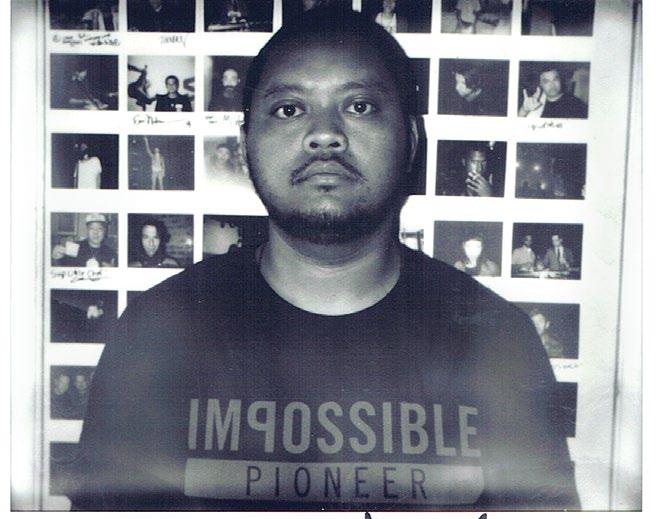
Tanja is a 100% film photographer and makeup + hair artist who specializes in fashion, commercial, music, fine art portraits and weddings. She’s a native to the Bay Area where she is raising her family.
tanjalippertphotography.com

Lenin is an aspiring illustrator and independent artist who works with local entrepreneurial businesses. Lenin studied fine art and illustration at San Joaquin college in northern California. Last year Lenin showcased an exhibit of custom hand-painted shoes displayed at diModa salon in San Jose.
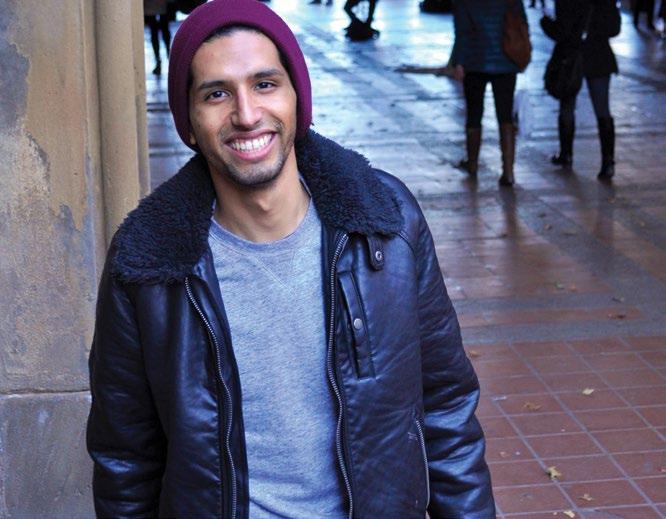
twitter: sour_kicks
KEVIN ZITTLE
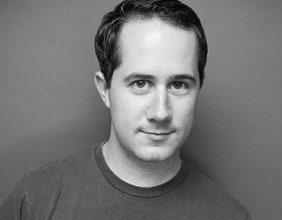
Kevin is a California-based photographer and designer. He’s an artist at heart and a maniacal technical genius to those who don’t know better. In his spare time, Kevin volunteers in the community, collects fine guitars, brews fine craft coffee, and criticizes bad typography. twitter: kevinz
KATE EVANS

Kate is a freelance writer and North Carolina native. A recent San Jose transplant, she enjoys learning about the city’s history and rich heritage, exploring farmer’s markets, finding the best wine tasting spots, and making San Jose home after living abroad in Europe and Africa.
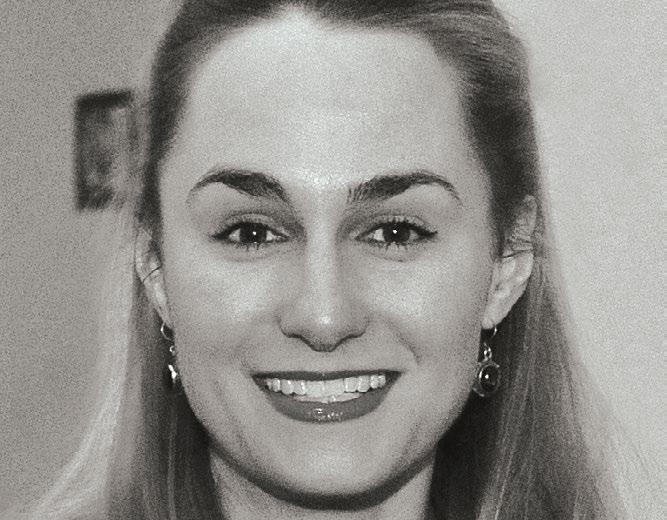
Leah is a Bay Area native, recently returned to California after a 7-year-detour to the East Coast. When she’s not at her day job, working as Communications Manager at a Silicon Valley arts organization, she can be found gallery-hopping, geeking out over typography, or taking her dog on a walk.
Flora is a writer and managing editor for Content Magazine. She is addicted to coffee and her two dogs, Lord Stanley and Little Joe. In her spare time, she enjoys traveling and writing about herself in the third person.
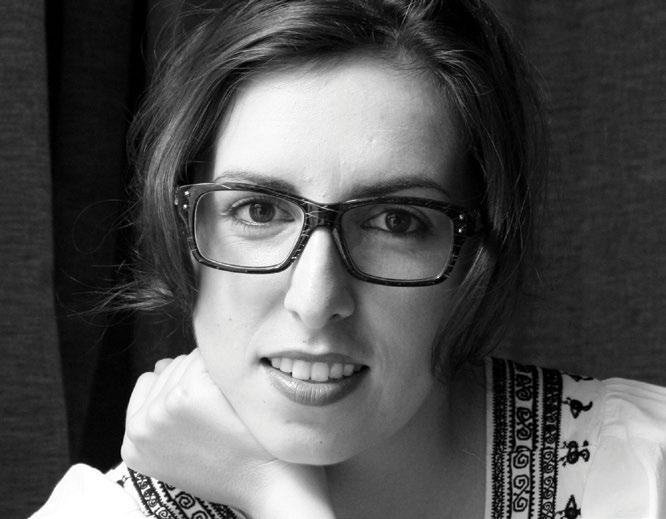
Anna is a Bay Area-based social media and marketing professional by day. At heart she is writer, storyteller, and comic. Her passions are the written word, music, and the beach. In her spare time she watches documentaries, drives Highway 1, and searches local farmer’s markets for that perfect heirloom tomato.
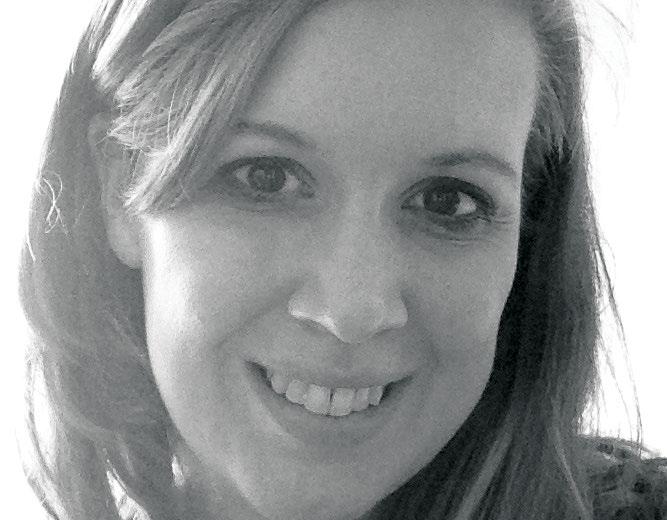 FLORA MORENO DE THOMPSON
LENIN OLAVARRIA
ANNA BAGIROV
JAY AGUILAR
TANJA LIPPERT
LEAH AMMON
FLORA MORENO DE THOMPSON
LENIN OLAVARRIA
ANNA BAGIROV
JAY AGUILAR
TANJA LIPPERT
LEAH AMMON
ODILE

Odile has worked the last 25 years as an editor and a writer in Silicon Valley’s high-tech industry. In coming to Content Magazine, she returns to her roots in the arts and humanities. And to designing reader experiences that, as well as being informative, are rich, full, and pleasurable.

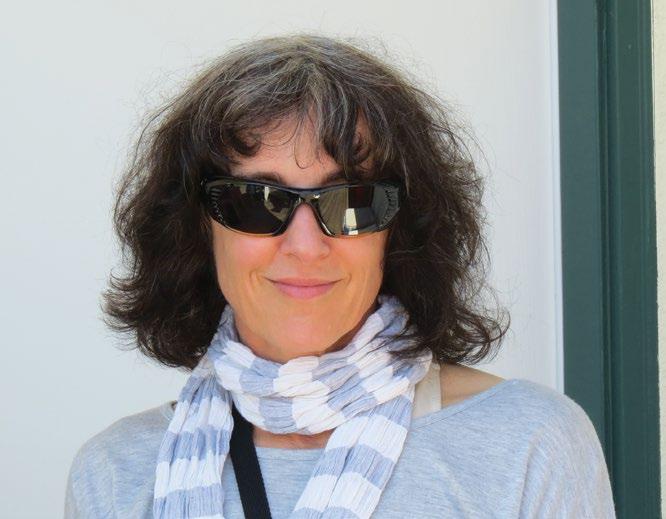
MICHELLE
Michelle moved to San Jose recently from Washington State. She gradated from Gonzaga University with two BAs: Political Science and History. With so much to do and see in the Bay Area, she spends her time strolling street festivals, seeing plays and musicals, and exploring San Francisco.
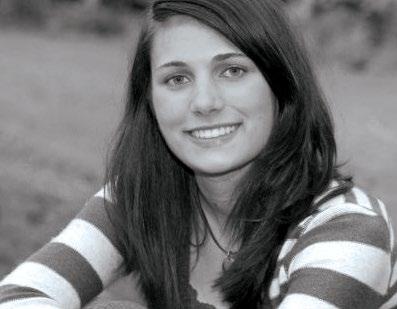
Nathan is a social media geek, a frequent doodler, and a pretty good juggler. He has called San Jose home for more than a decade, and has ingrained himself in the arts and cultural scene through his work with the Montalvo Arts Center, the Camera Cinemas, Cinequest, and the San Jose Downtown Association.
BRIAN GOMEZ

Brian Gomez is a San Jose native. He graduated from San Jose State University with a Bachelor of Fine Arts in Graphic Design. He enjoys playing music and a good bike party. He worked as a producer at WebEnertia and is now a production designer at Oracle’s Brand and Creative department.
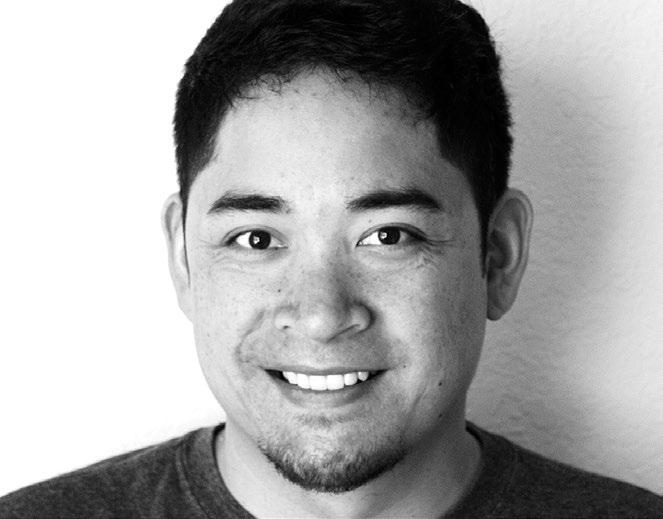

Gregory is a Bay Area interior design, architectural, and editorial photographer. Whether it’s working with Content Magazine or photographing amazing spaces, Gregory loves being behind the camera.
LAM NGUYEN
Lam, photographer and writer, is a San Jose native. Though his travels have taken him to four continents, he has always considered Silicon Valley home. His love for the written word has always been a major driving force in his life. These days, he indulges in the possibility of one day retaking American journalism.
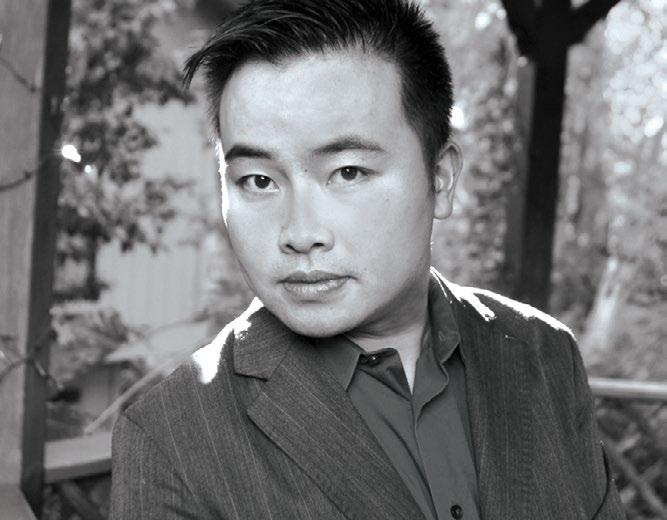
cover details
Photography by Tanja Lippert
Kayla: Pink Crop - Topshop $40
Skirt - Bailey 44 $174
Shoes - Schutz, Kash $180
Joe: Sweater - Muji $59.95
Pants - Muji $59.95
Quilted Jacket - Muji $59.95
Shoes - Donald J. Pliner $475
VICTORIA FELICITY ELIZONDO
Victoria has a background in global business operations and she also moonlights as a writer and a portrait and live music photographer. She is drawn to people who inspire her interest in music, innovation, and creativity. Her aim is to achieve honest interviews with incredible people. She is also a killer salsa dancer.
Special thanks to Asiel Design and Tulio Flores for the picnic set styling. asieldesign.com
And to Cooper Garrod Estate Vineyard for hosting the shoot. cgv.com
 NATHAN ZANON
SULLIZAN-TARAZI
RUNDE
NATHAN ZANON
SULLIZAN-TARAZI
RUNDE
75
GREGORY CORTEZ





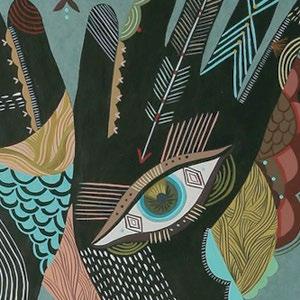





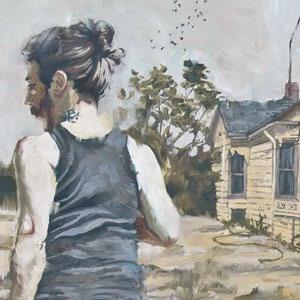

510 South 1st Street, San José (408) 998-2783 | info@maclaarte.org www.maclaarte.org 2014-2015: Celebrating 25 Years of Innovative Latino Arts & Culture DEC 5, 2014 - MAR 14, 2015 141113 Content v5.indd 1 Nov/13/2014 4:05 PM Opening Reception: Friday, December 12, 2014 7-11pm Exhibit on view: December 12, 2014-January 9, 2015 525 N 7th Street, San Jose, CA BROAD SPECTRUM www.empiresevenstudios.com
Candie Bolton Lacey Bryant Kristin Farr Jayde Fish Angela Fox Andrea Heimer Lauren Napolitano Pacolli Bunnie Reiss Sandra Wang Ariel Wilson
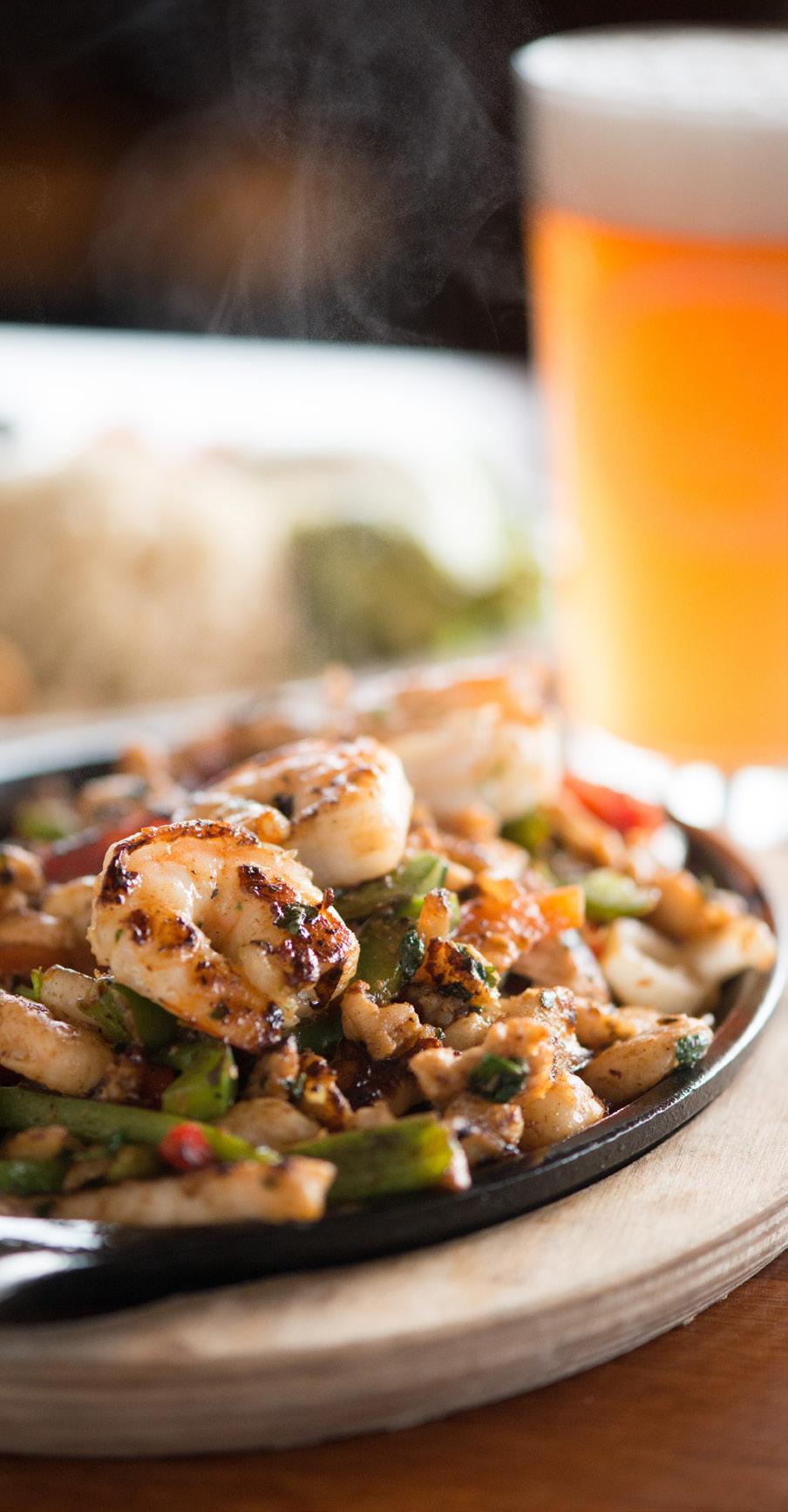

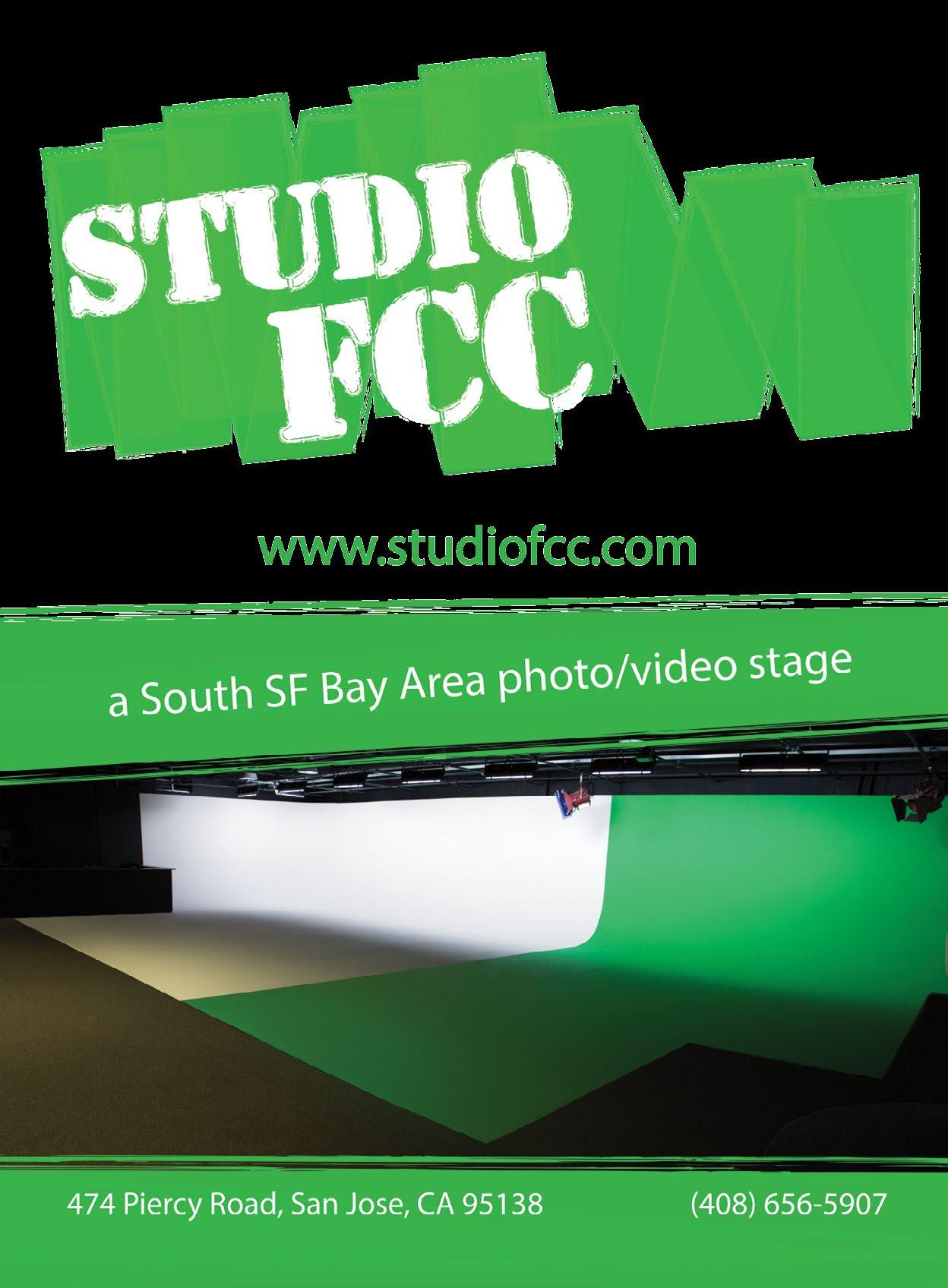
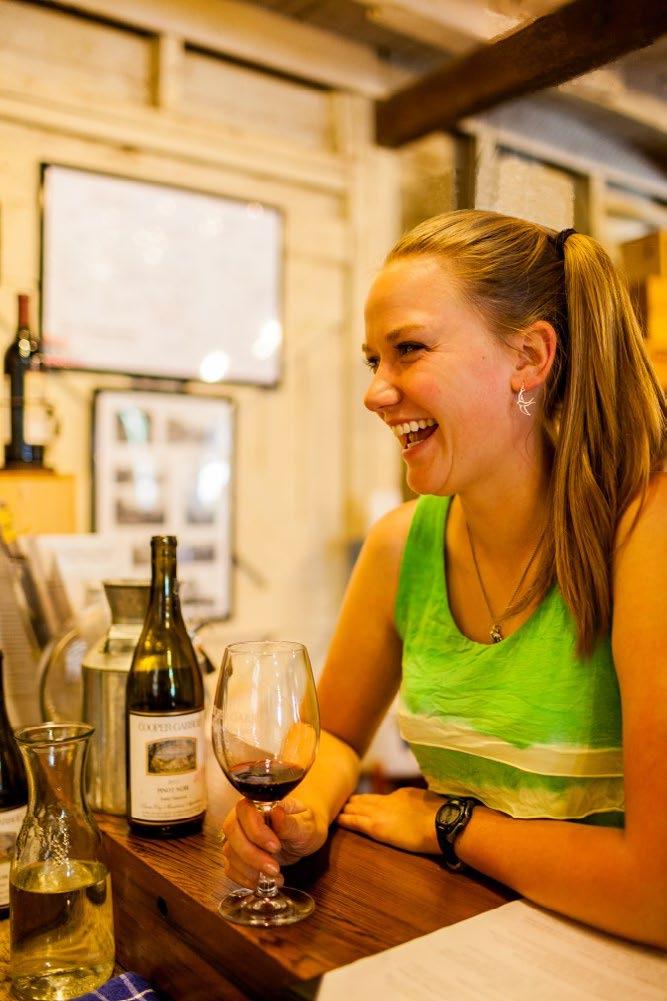
Cheers! COOPER GARROD Estate Vineyards 22645 Garrod Road, Saratoga www.cgv.com 408.867.7116 Open Daily .


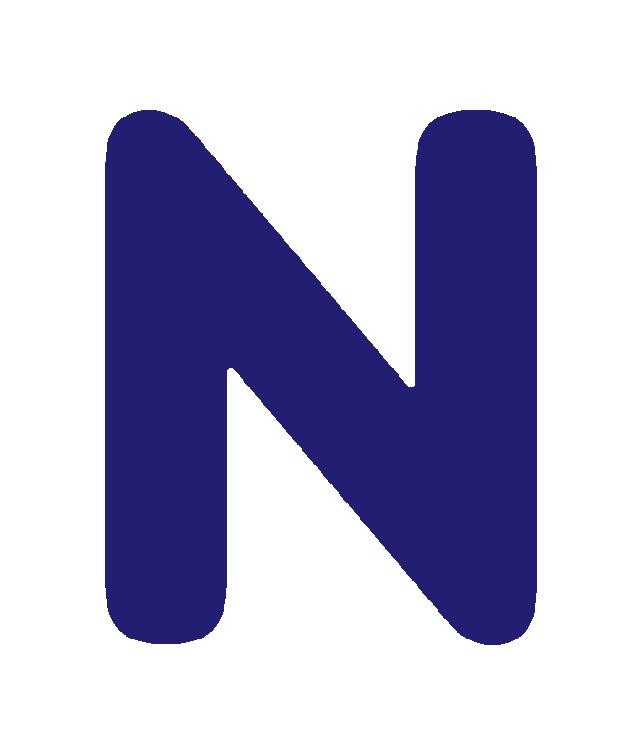







A San Jose Downtown Association Production. Supported in part by a Cultural Affairs grant from the City of San Jose. KRISTI YAMAGUCHI November 14January 11 (408) 291-0525 Circle of Palms Downtown San Jose sjdowntown.com Special thanks to our sponsors: Hawaiian Airlines • Kristi Yamaguchi’s Always Dream Foundation • PG&E • Wells Fargo • Huawei • PayPal • Barry Swenson Builder Level 3 Communications • Skanska • The Mercury News • Silicon Valley Community Newspapers • El Observador • Content Magazine • NBC Bay Area Telemundo 48 • 94.5 KBAY • MIX 106.5 • La Raza 93.3 • KQED • Clear Channel Outdoor • VTA • Capitol Corridor • Yelp • Republic Services A San Jose Downtown Association Production. Supported in part by a Cultural Affairs grant from the City of San Jose. C M Y CM MY CY CMY K



SHOP DOWNTOWN SHOP LOCAL - SHOP INDIE Nov. 7, 2014 – Jan. 15 www.sjdowntown.com/popup


Jan. 24, 2015 at Westfield Valley Fair VALLEY FAIR sponsored by: MODEL SEARCH 2015 Prizes: *Model Contract with Scout Models @scoutmodelagency www.scouttm.com *Editorial in Content @contentmagMagazine www.content-magazine.com *Gift Cards and other Prizes for Westfield Valley Fair @Westfieldvf www.westfield.com/valleyfair Model: Avery Tharp Photo:Tanja Lippert c magazine content Open to ages 10 and up. Registrer online: bit.ly/ModelSearch15 (First 500 entries only.)


ca
CONTENT NEXT ISSUE
reveal 7.0 SAN JOSE 2015 WWW.CONTENT-MAGAZINE.COM facebook.com/contentmag twitter.com/contentmag
ANNuAl SubSCripTiON
priNT $42.00
silicon valley’S INNOVATIVE & CREATIVE CULTURE
made in sanjose,






























 Shelia Hatch
Vincent DeCarolis
Shelia Hatch
Vincent DeCarolis















 *From Food Truck Road Trip: A Cookbook by Kim Pham, Philip Shen, Terri Phillips, printed with permission of Page St. Publishing
twitter: mmhtruck
*From Food Truck Road Trip: A Cookbook by Kim Pham, Philip Shen, Terri Phillips, printed with permission of Page St. Publishing
twitter: mmhtruck
 Interview and Photography by Isara Krieger
Interview and Photography by Isara Krieger







 Story by Leah Ammon Photography by Daniel Garcia
Story by Leah Ammon Photography by Daniel Garcia









 Poncho - Simonetta, Black Cat Hats, Los Gatos $58 Pants - Citizens of Humanity, Rouge, Los Gatos $245 Black Scarf - Look, Prim, Los Gatos $24.50 Grey Scarf - BP, Nordstrom Valley Fair $24
Poncho - Simonetta, Black Cat Hats, Los Gatos $58 Pants - Citizens of Humanity, Rouge, Los Gatos $245 Black Scarf - Look, Prim, Los Gatos $24.50 Grey Scarf - BP, Nordstrom Valley Fair $24

 Sweater - 3.1 Phillip Lim, Nordstrom Valley Fair $475.00
Wrap - Ugg Home, Nordstrom Valley Fair $295
Shoes - Donald J. Pliner, Santana Row $268
Coil Ring - Lotus, Los Gatos $36
Midi Ring - Lotus, Los Gatos $32
Thumb Ring - Lotus, Los Gatos $36
Sweater - 3.1 Phillip Lim, Nordstrom Valley Fair $475.00
Wrap - Ugg Home, Nordstrom Valley Fair $295
Shoes - Donald J. Pliner, Santana Row $268
Coil Ring - Lotus, Los Gatos $36
Midi Ring - Lotus, Los Gatos $32
Thumb Ring - Lotus, Los Gatos $36
 Sweater - Marc by Marc Jacobs, Nordstrom, $368 Pants - Alexander Wang, Nordstrom, $275
Shoes - Donald J. Pliner, Santana Row $198
Thumb Ring - Lotus, Los Gatos $36
3-Finger Ring - Kash, Santana Row $25
Sweater - Marc by Marc Jacobs, Nordstrom, $368 Pants - Alexander Wang, Nordstrom, $275
Shoes - Donald J. Pliner, Santana Row $198
Thumb Ring - Lotus, Los Gatos $36
3-Finger Ring - Kash, Santana Row $25
 Sweater - Dries Van Noten, Nordstrom VF $1,350 Skirt - Lotus, Los Gatos $68 Boots - Schutz, Kash Santana Row $320 Ring - Lotus, Los Gatos $42
Sweater - Dries Van Noten, Nordstrom VF $1,350 Skirt - Lotus, Los Gatos $68 Boots - Schutz, Kash Santana Row $320 Ring - Lotus, Los Gatos $42

 Photography by Tanja Lippert
Photography by Tanja Lippert
 Photographer - Tanja Lippert
Photo Assistant - Kayleigh Sullivan
Models - Kayla, JE Model Management
Joe, Scout Model Management
Hair & Make-up - Tanja Lippert
Stylist - Allison Salas
Picnic set styling by Asiel Design and Tulio Flores
Producer - Kristen Pfund
Location - Cooper Garrod Estate Vineyard
Photographer - Tanja Lippert
Photo Assistant - Kayleigh Sullivan
Models - Kayla, JE Model Management
Joe, Scout Model Management
Hair & Make-up - Tanja Lippert
Stylist - Allison Salas
Picnic set styling by Asiel Design and Tulio Flores
Producer - Kristen Pfund
Location - Cooper Garrod Estate Vineyard



 Kayla: Dress - Aiden Mattox, Nordstrom Valley Fair $495; Coat - Moon Zooom
Kayla: Dress - Aiden Mattox, Nordstrom Valley Fair $495; Coat - Moon Zooom




 Top_ Kayla: Shirt - Chelsea28, $98; Bralette - Topshop, $40; Skirt - Astr, $78 All available at Nordstrom Valley Fair Joe: Sweater - Wallin & Bros, Nordstrom Valley Fair $98; Pants - Muji $89.95 Hat - Black Cat Hats, Los Gatos
Bottom_ Joe:: Shirt - Topman $50; Pants - Muji $59.95
Coat - First Article, Container Pop Up San Jose
Top_ Kayla: Jumpsuit - Rules of Etiquette, Nordstrom Valley Fair $78 Necklaces - Prim, Los Gatos; Hat - Black Cat Hats, Los Gatos $88
Joe: Shirt - Topman, Nordstrom Valley Fair $55; Pants - Muji $89.95
Bottom_ Kayla: Coat - Muji $199.95; Blouse - Black & Brown $32
Topshop, Nordstrom Valley Fair $40; Skirt -Kiss & Make-up, Los Gatos
Top_ Kayla: Shirt - Chelsea28, $98; Bralette - Topshop, $40; Skirt - Astr, $78 All available at Nordstrom Valley Fair Joe: Sweater - Wallin & Bros, Nordstrom Valley Fair $98; Pants - Muji $89.95 Hat - Black Cat Hats, Los Gatos
Bottom_ Joe:: Shirt - Topman $50; Pants - Muji $59.95
Coat - First Article, Container Pop Up San Jose
Top_ Kayla: Jumpsuit - Rules of Etiquette, Nordstrom Valley Fair $78 Necklaces - Prim, Los Gatos; Hat - Black Cat Hats, Los Gatos $88
Joe: Shirt - Topman, Nordstrom Valley Fair $55; Pants - Muji $89.95
Bottom_ Kayla: Coat - Muji $199.95; Blouse - Black & Brown $32
Topshop, Nordstrom Valley Fair $40; Skirt -Kiss & Make-up, Los Gatos











 FLORA MORENO DE THOMPSON
LENIN OLAVARRIA
ANNA BAGIROV
JAY AGUILAR
TANJA LIPPERT
LEAH AMMON
FLORA MORENO DE THOMPSON
LENIN OLAVARRIA
ANNA BAGIROV
JAY AGUILAR
TANJA LIPPERT
LEAH AMMON







 NATHAN ZANON
SULLIZAN-TARAZI
RUNDE
NATHAN ZANON
SULLIZAN-TARAZI
RUNDE


































